Our Swimming Pool (2001-2018, and Beyond)
When we moved to Ohio in 2001, we of course needed to find a house to live in.
When asked about what I wanted in a house, I told Roxanne, the realtor,
and anbody else that would listen that I didn't really care, as long as
it did NOT have a swimming pool. We had a pool in North Carolina, which
proved to be a bit of a time and money pit. In any case, we found a great
house, complete with a swimming pool.
The previous owner had given up on maintaining the pool, and it was full of
muck and crawling with Bullfrogs. Although we moved into the house in
mid summer of 2001, we did not do anything with the pool until the
following summer. We only took a few photos in the beginning.
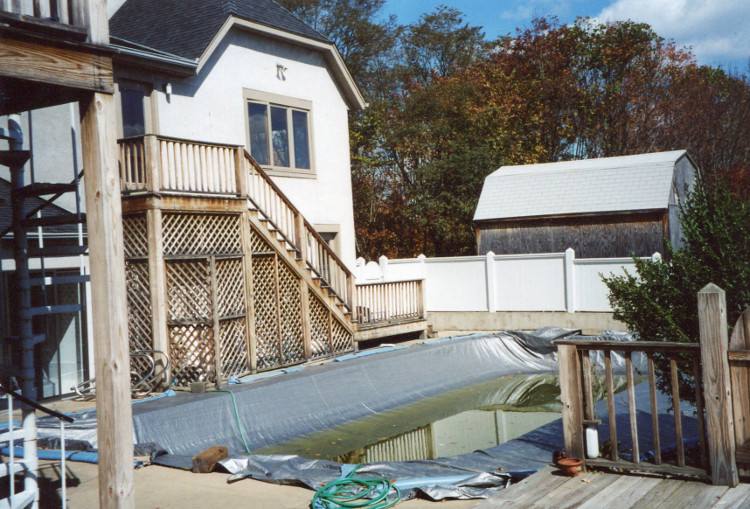
The pool in October 2001. It's hard to tell, but there is a ton of leaves
and other muck on top of the tarp.
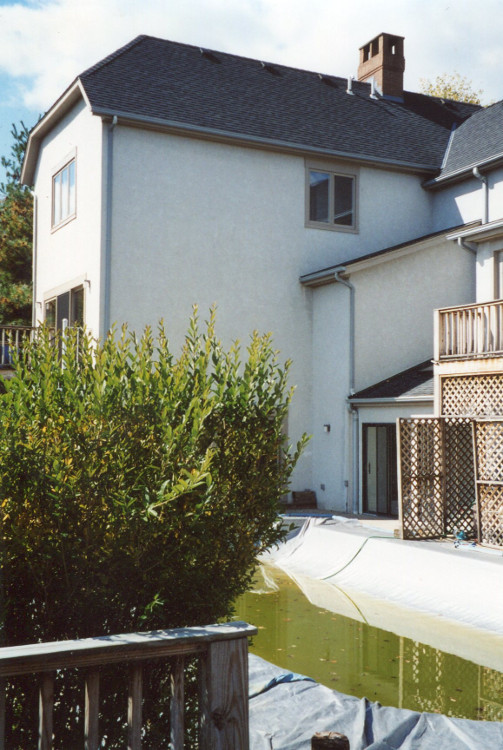
Another shot from October 2001.
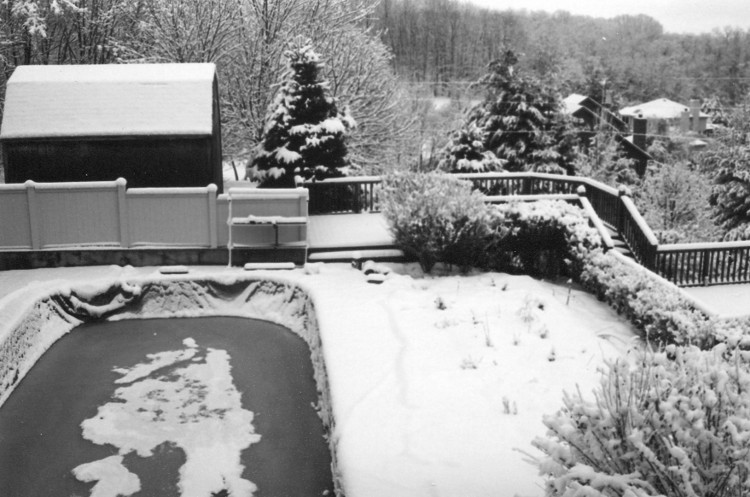
The pool in February 2002.
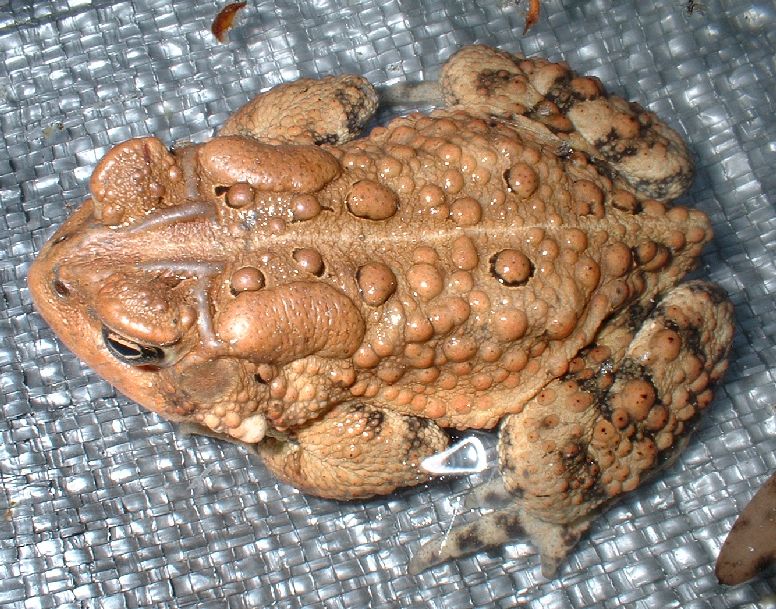
This would seem to be the first photo a critter from our pool, an American
Toad (Bufo americanus), from 11 April 2002.
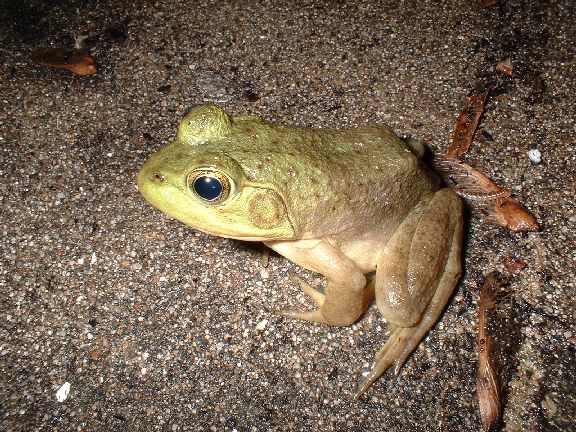
A Bullfrog (Rana catesbeiana) seen on our pool deck one evening
in May 2002.
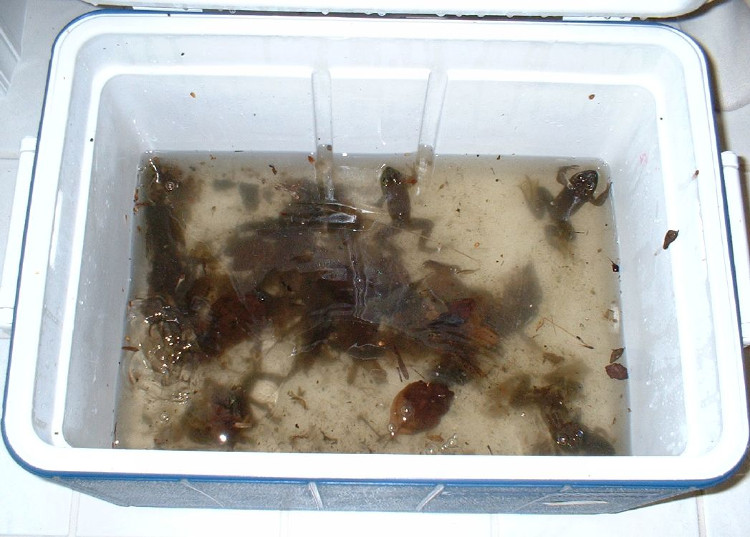
In June of 2002, we cleaned up the swimming pool at our new house. I wish that
we would have taken more pictures in the beginning. My parents were visiting
when we did this. These are some bullfrogs that we caught out of it.
There are eight of them. We gave them to a friend who had a pond.
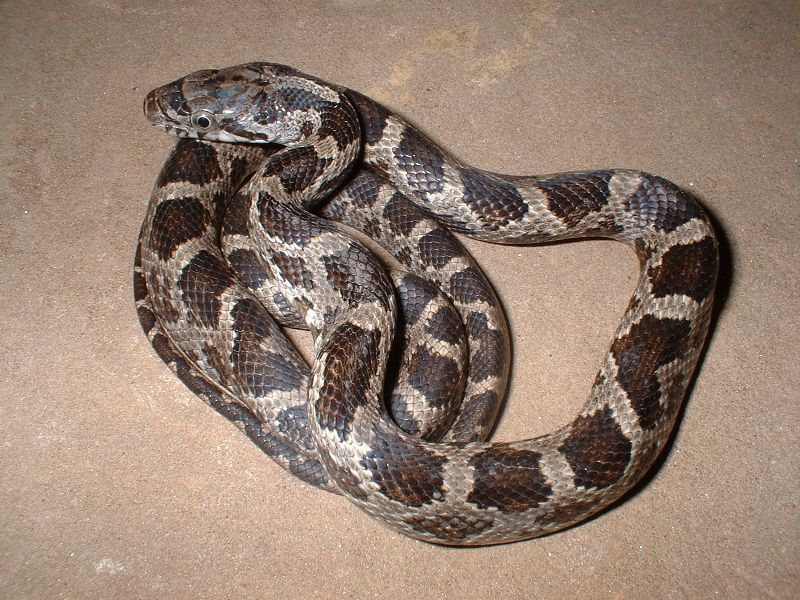
A young Black Ratsnake (Elaphe obsoleta). We found this little guy in
our backyard on June 10 when we were cleaning up some junk left around the
swimming by the previous owners.
The snake was in an old thermal blanket for the pool.
I decided to keep it, and still have it now.
It must have hatched in the late summer of 2001.
Needless to say, it is much bigger now...
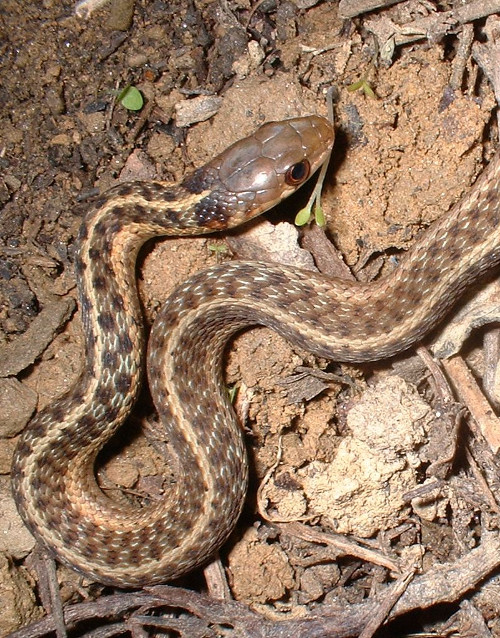
We had many Common Garter Snakes (Thamnophis sirtalis) in 2002.
This is a neonate found on October 7. Regretfully, the garter snakes became
very scarce on our property after we clean up some junk and only allowed the
amphibians to live in the pool at certain times of the year.
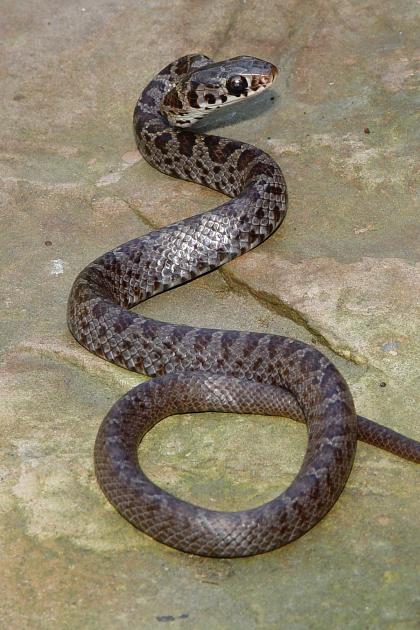
A neonate Black Racer (Coluber constrictor), found in our pool
on 12 September 2003.
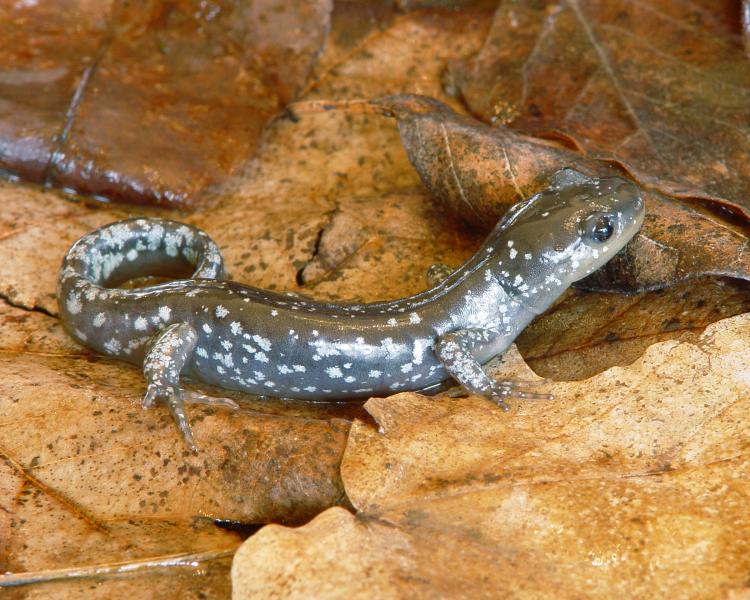
A young Jefferson Salamander (Ambystoma jeffersonianum), 4 March 2004.
It turned up in our swimming pool.
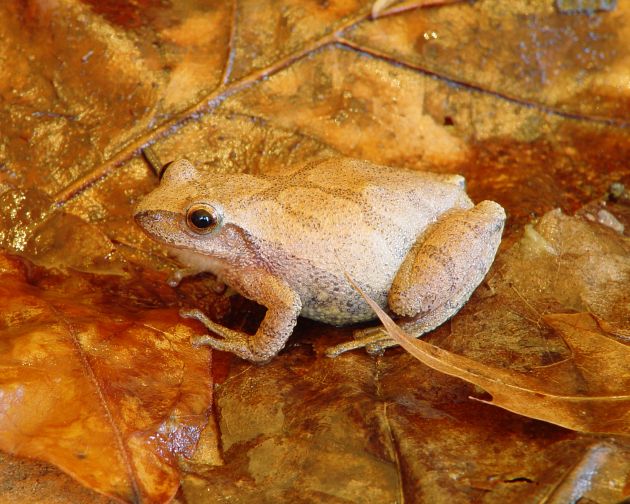
A Spring Peeper (Pseudacris crucifer) found in our pool on
22 March 2004.
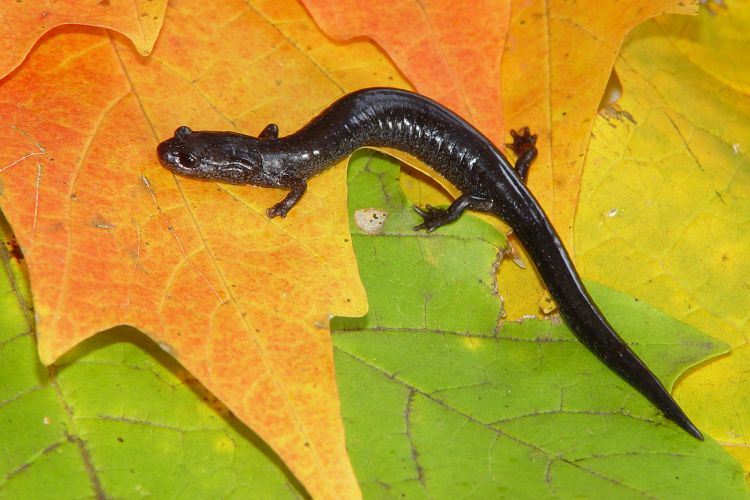
One of three Ravine Salamanders (Plethodon electromorphus) found on
the bottom of our swimming pool, under several feet of water,
on 23 October 2004.
They did this surprisingly frequently. I do not know if it was intentional
on their part or not. It seemed they had little difficulty scaling the
vertical sides of the pool and getting out (see below). I remain a little
puzzled by this, since they are supposed to be 100% terrestrial.
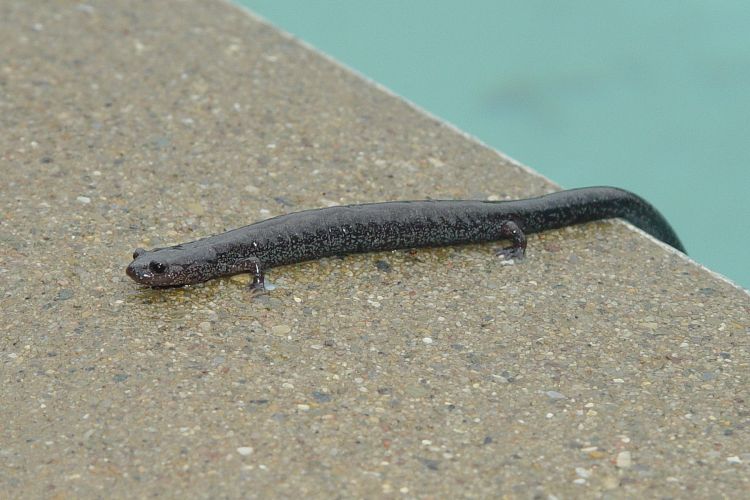
A Ravine Salamander (Plethodon electromorphus) found on 20 May 2005,
shown as found, chillin on our pool deck after taking a dip.
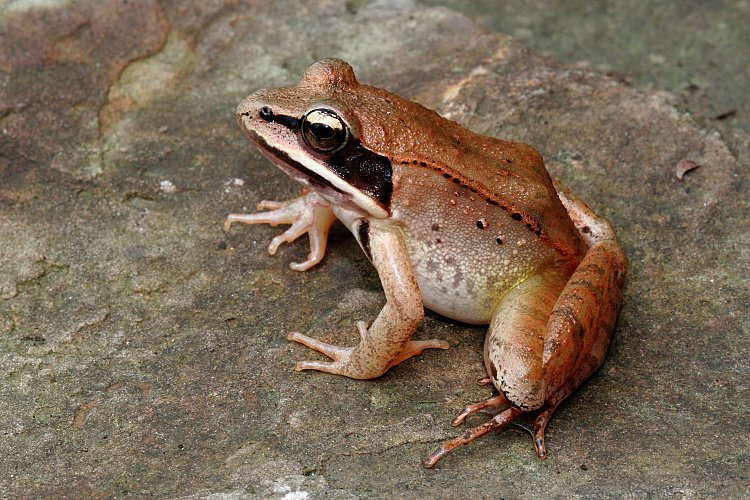
A Wood Frog (Rana sylvatica) found in our pool on 27 August 2006.
I was always curious why these never bred in our pool. More on this below.
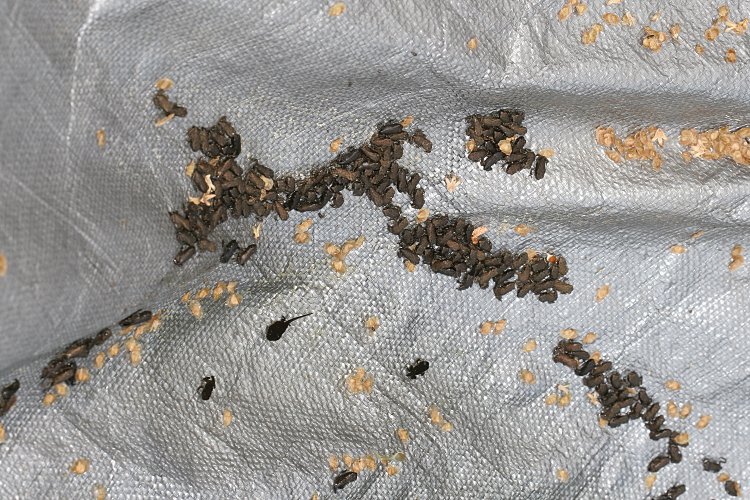
American Toadlets (Bufo americanus), in our backyard, on 1 June 2008.
The tadpoles grew in the water that had collected on top of the tarp which
covers our swimming pool.
This scene was repeated all around the edge of the pool.
I figure our pool contributed a couple of thousand young
toads to the world this season.
After they transformed, they hung around the edge of the water for a couple
of days, then they all dispersed when we had a big rainstorm.
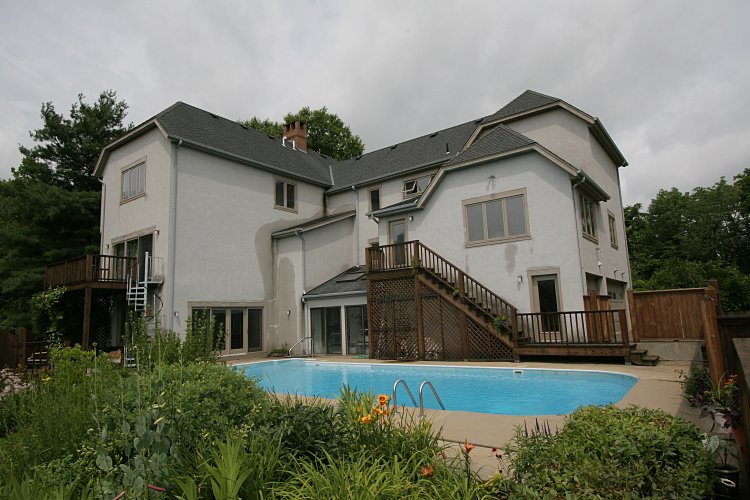
The pool on 29 June 2008. This is what it looked like when the amphibians
were evicted (June-September in most years).
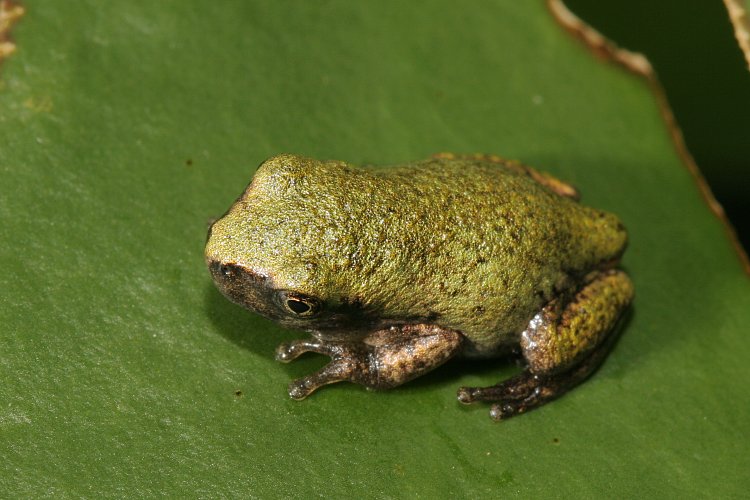
A Cope's Gray Treefrog metamorph (Hyla chrysoscelis) from our yard on
the same day as the above photo.
The pool always kept our yard well stocked with this species.
Note that all of the Gray Treefrogs in the Athens area seem to be Cope's.
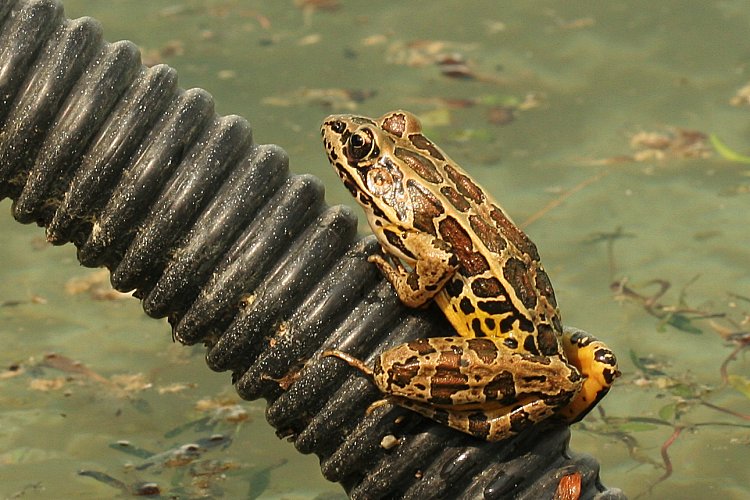
A Pickerel Frog (Rana palustris), hanging out on the sump pump in our
swimming pool on 23 May 2009. The sump pump was used to pump away the water
that was on top of the tarp. Pickerel Frogs showed up at our pool from time
to time, but never during their early spring breeding season.
They are more likely to be seen along the tiny creek in the ravine behind
our house.
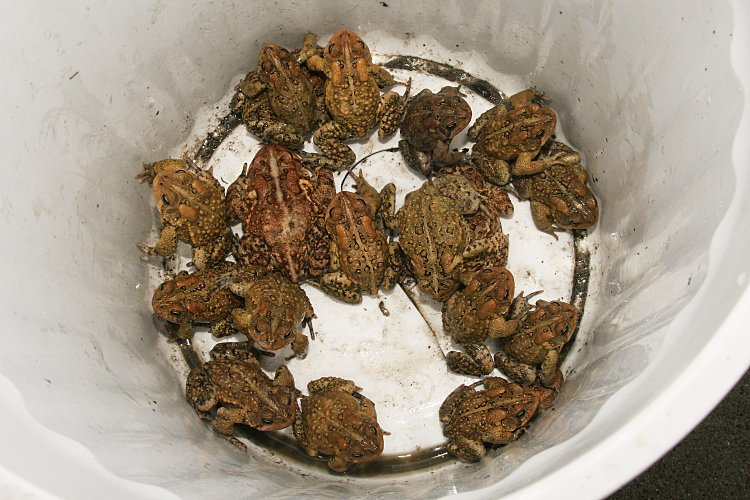
In early May, 2010, we had drawn down our swimming pool for maintenance.
On May 3, I removed 22 American Toads (Bufo americanus) and a bunch
of their eggs from the tiny bit of remaining water. Here are 20 of the toads.
The other two were an amplectant pair that was moved separately to another
pond, along with all of the eggs.
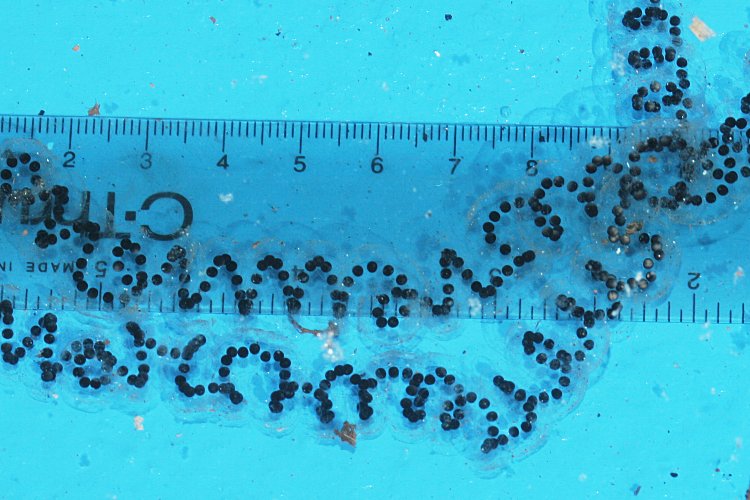
Freshly-laid American Toad eggs in the pool.
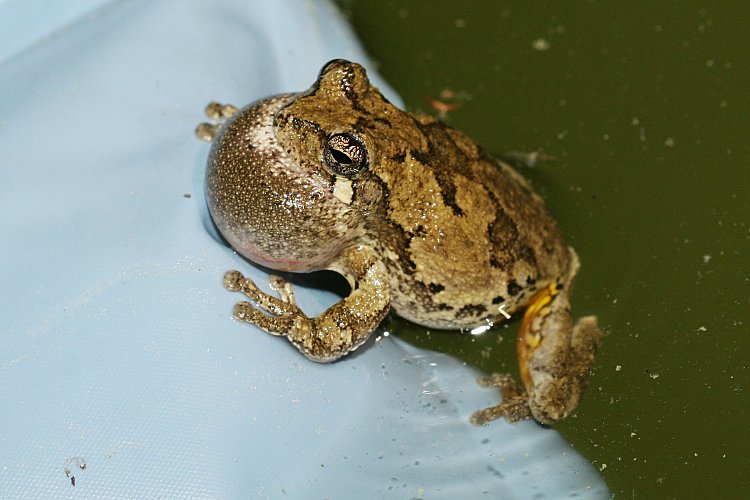
A Cope's Gray Treefrog (Hyla chrysoscelis), in our swimming pool,
on 23 May 2011.
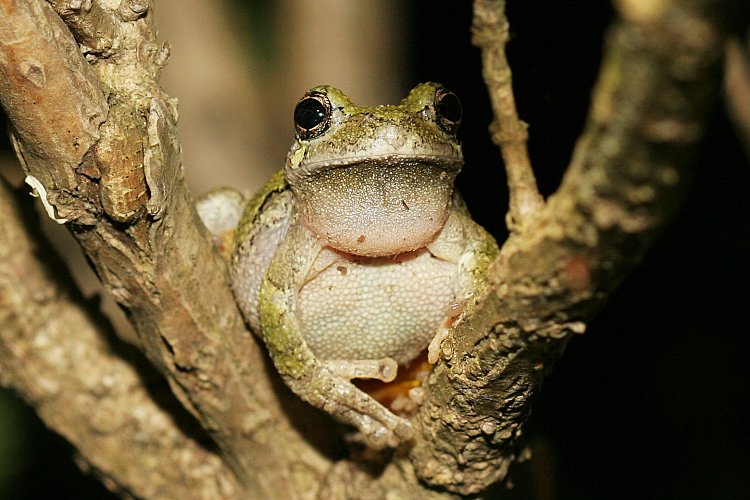
Another Cope's Gray Treefrog (Hyla chrysoscelis),
in a bush near the pool.
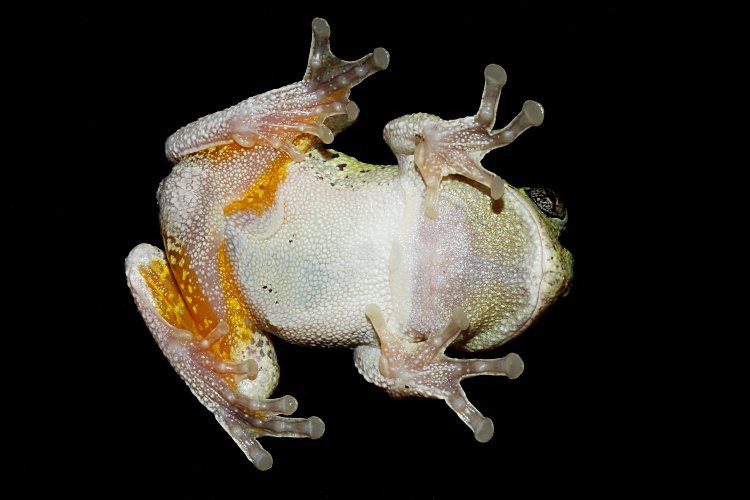
Cope's Gray Treefrog (Hyla chrysoscelis), as seen on one of our
upstairs windows one night.
In the spring of 2012, the Wood Frogs (Rana sylvatica) finally figured
out that our swimming pool was a good place to breed.
Before this, we would get an
single individual in one of the filter baskets on rare occasions following
rains outside of the breeding season. They bred in our pool every year
therafter.
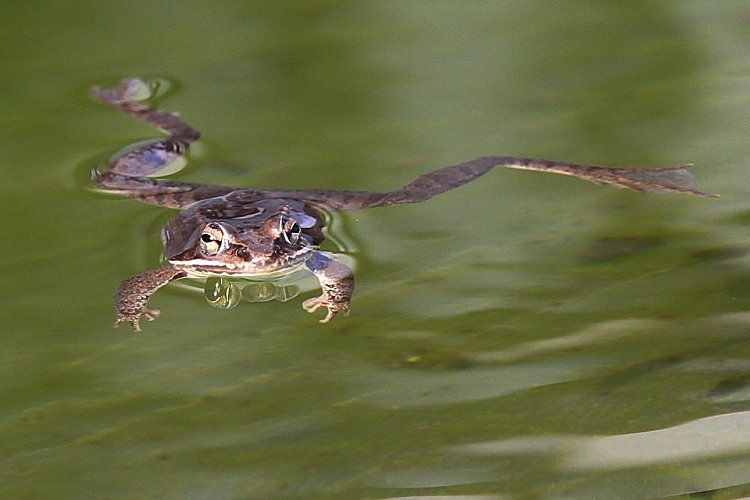
A Wood Frog (Rana sylvatica), observed calling on March 3
from the water that collects on the tarp that covers our swimming pool.
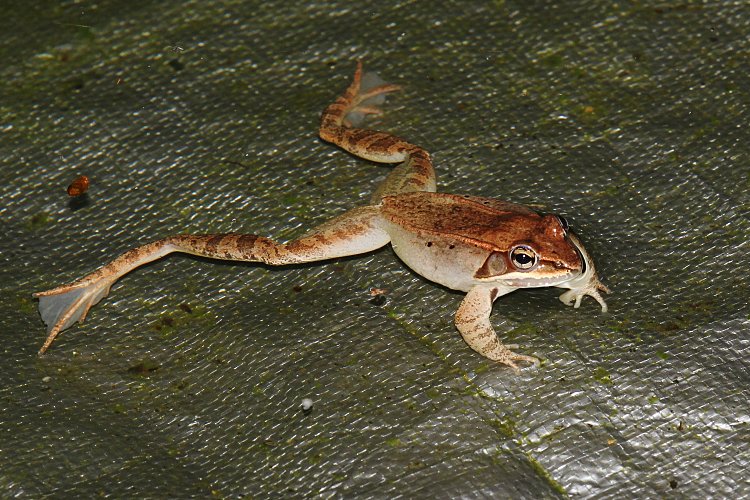
Another Wood Frog (Rana sylvatica) in our pool.
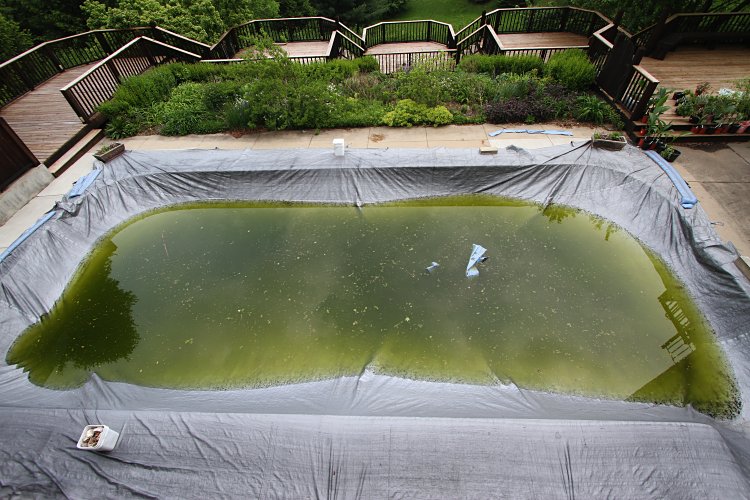
Our pool on 30 April 2012, home to many tadpoles.
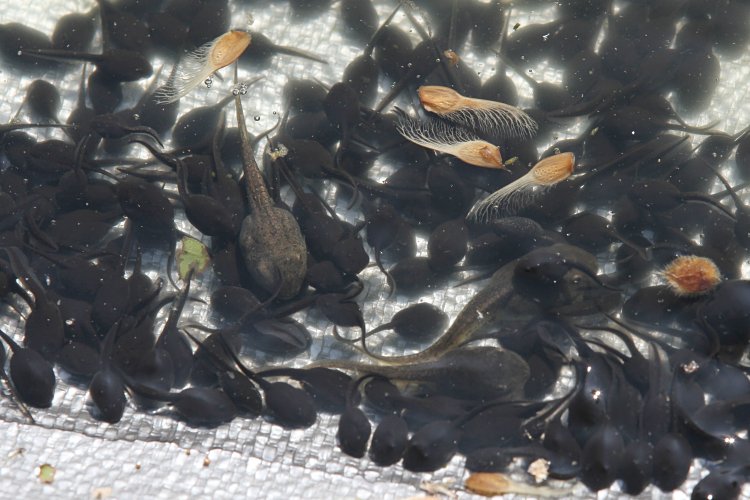
A small sampling of the tadpoles in our pool. The larger ones are Wood Frogs,
the smaller ones are American Toads.
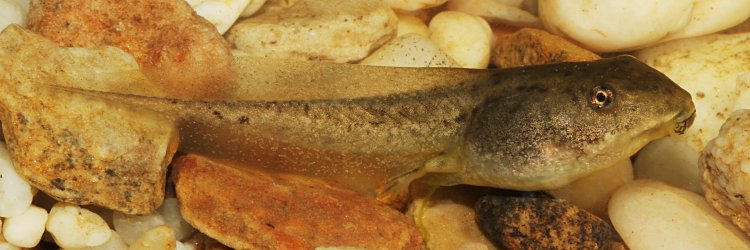
A Wood Frog (Rana sylvatica) tadpole from our pool.
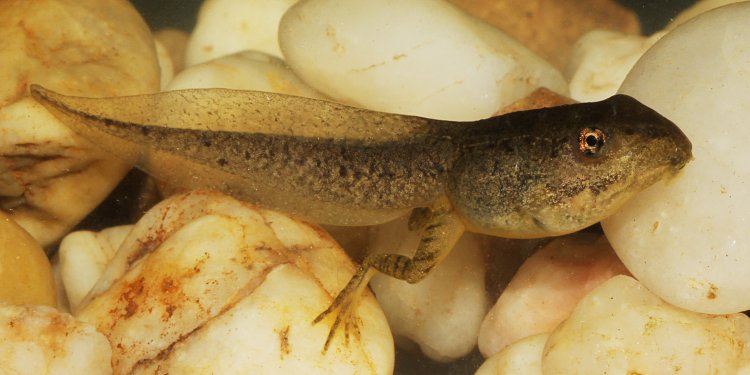
Another Wood Frog tadpole from our pool.
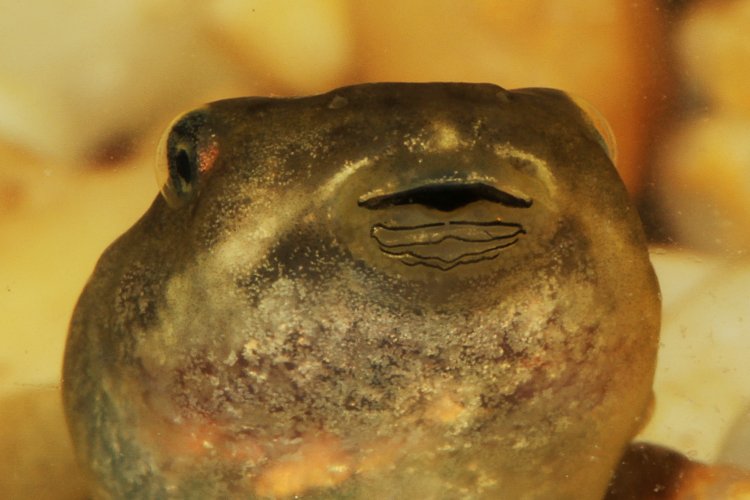
A close up of a Wood Frog tadpole.
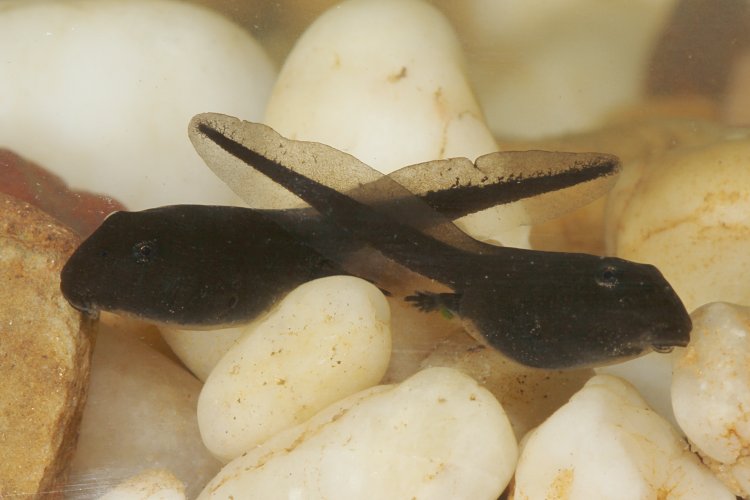
American Toad (Bufo americanus) tadpoles from our pool.
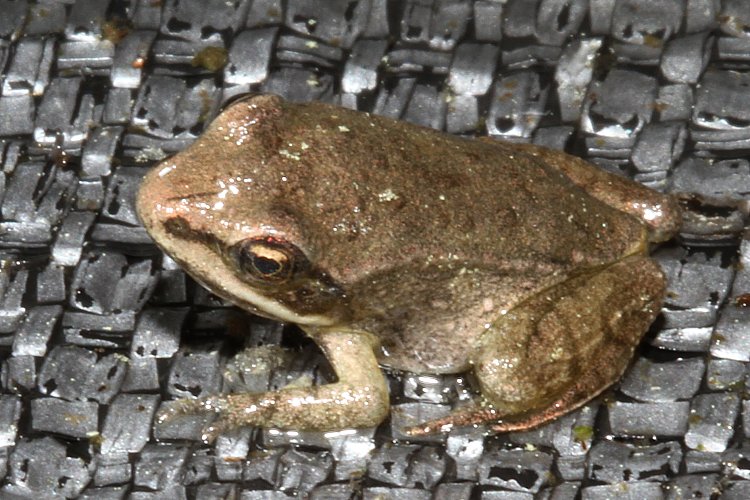
A Wood Frog metamorph from our pool.
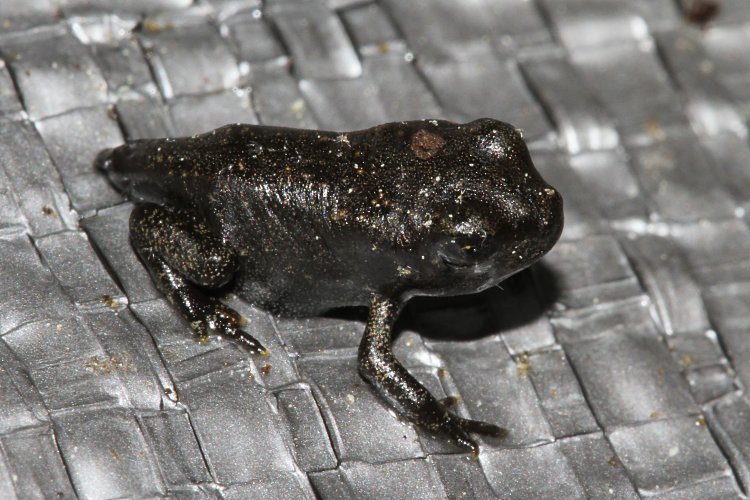
An American Toad metamorph from our pool.
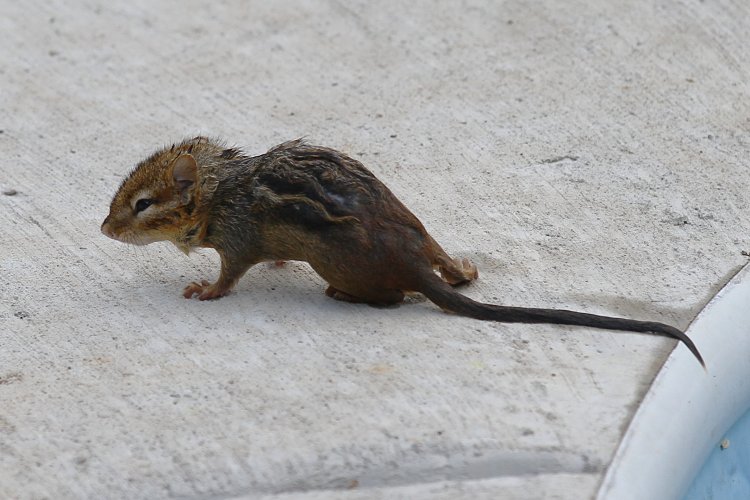
This chipmunk apparently went for an unplanned swim in our pool one day.
This is exactly how I found it on our pool deck -- totally exhausted and
gasping for breath... Looked like it had just crawled out of the pool.
Glad it made it out (sometimes they do not). I checked back in about
10 minutes and it looked a lot better; it was trying to preen its tail
back into shape...
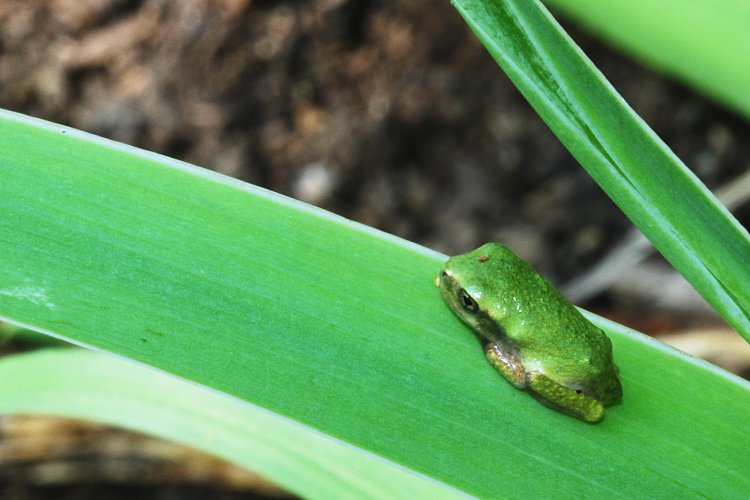
A baby Cope's Gray Treefrog (Hyla chrysoscelis) that Rox spotted in our
garden in the middle of the summer. Photographed as found.
In 2013, the Wood Frogs did not start breeding in our pool until
April 7, when they did so along with the American Toads.
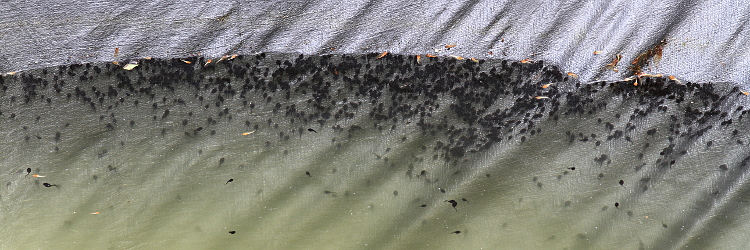
Our pool on 19 May 2013. These are American Toad (Bufo americanus)
tadpoles.
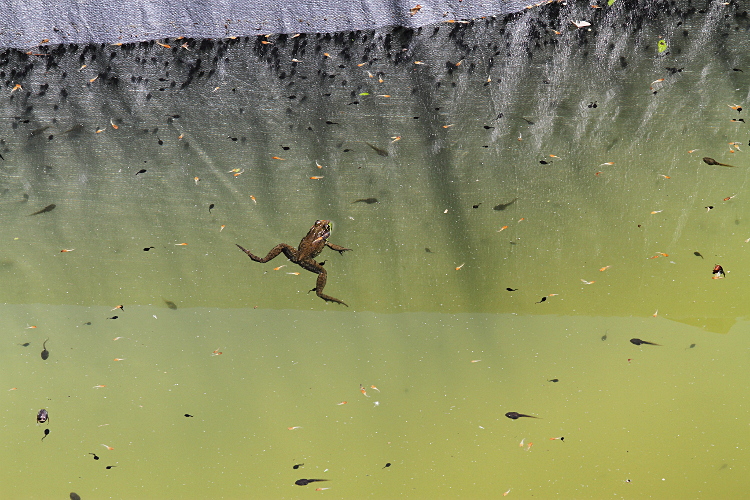
Another photo from our pool on May 19. The frog is a Green Frog
(Rana clamitans), the larger tadpoles are
Wood Frogs (Rana sylvatica), and the smaller ones are
American Toads. The toad tadpoles show no fear of the frog, and even seem to
graze on its skin. The Wood Frog tadpoles, on the other hand, make a
conscious effort to avoid to avoid the frog -- no doubt because the frog will
eat them. It turns out that toad tadpoles are toxic to most predators.
I watched for about 10 minutes, and the Wood Frog tadpoles never once got
close to the frog.
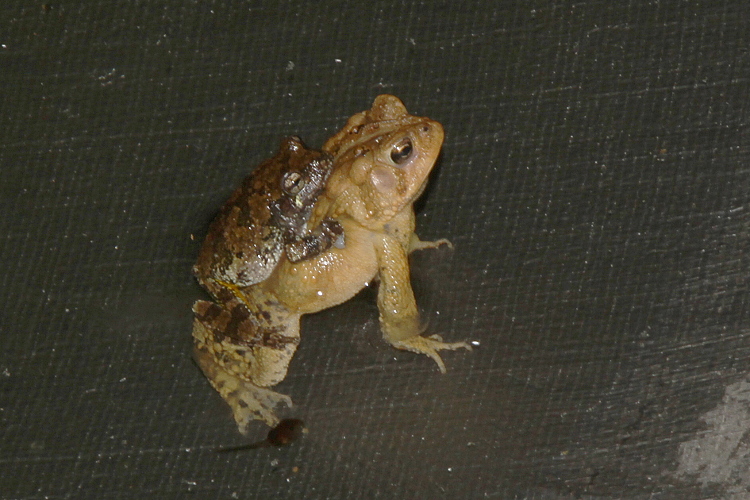
A Cope's Gray Treefrog (Hyla chrysoscelis) and an
American Toad (Bufo americanus) observed in our pool on
6 June 2013. I don't think this is going to work... I did think it was
interesting that American Toads were calling this late in the season.
Note the American Toad tadpole by the rear foot of the adult toad.
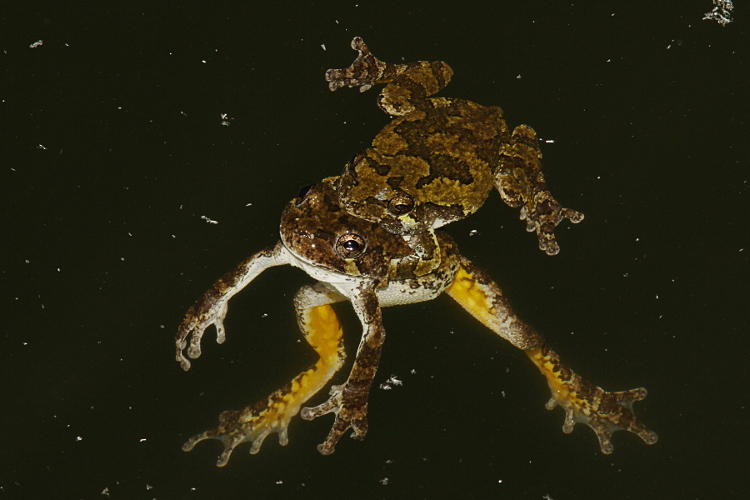
Cope's Gray Treefrogs (Hyla chrysoscelis) from the same night.
It kind of looks like they are floating in outer space.
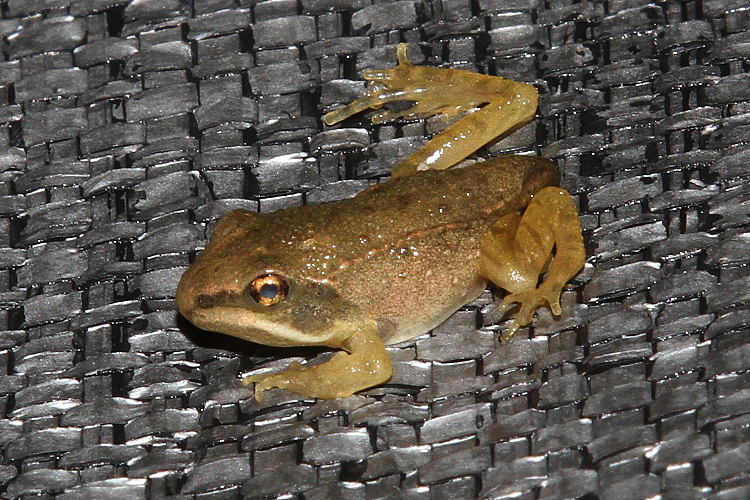
A metamorph Wood Frog (Rana sylvatica) observed the same night.
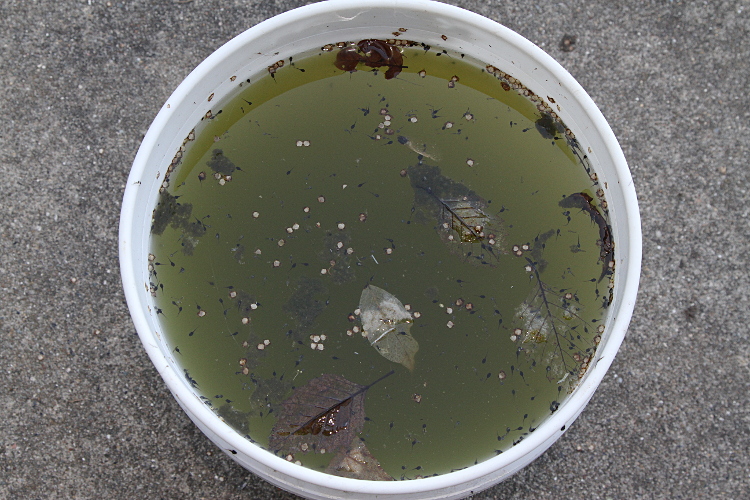
Silly Cope's Gray Treefrogs (Hyla chrysoscelis) "made babies" in a
random bucket in our yard. Life Finds a Way. 20 June 2013.
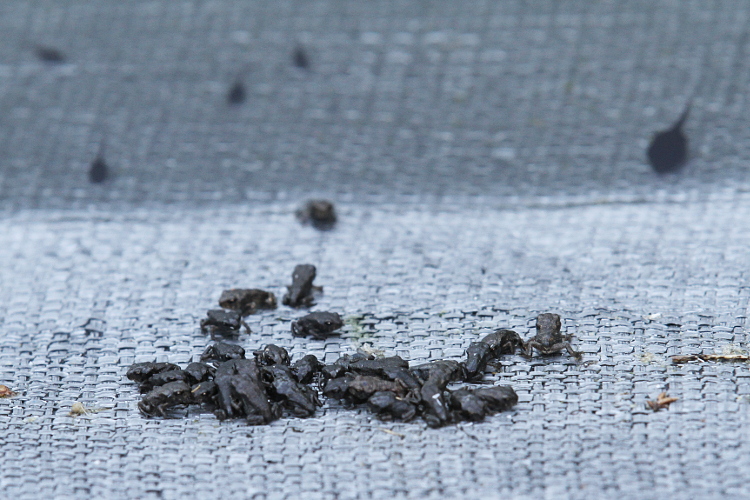
American Toadlets (Bufo americanus) emerging from our pool on
20 June 2013. They huddle together to conserve moisture.
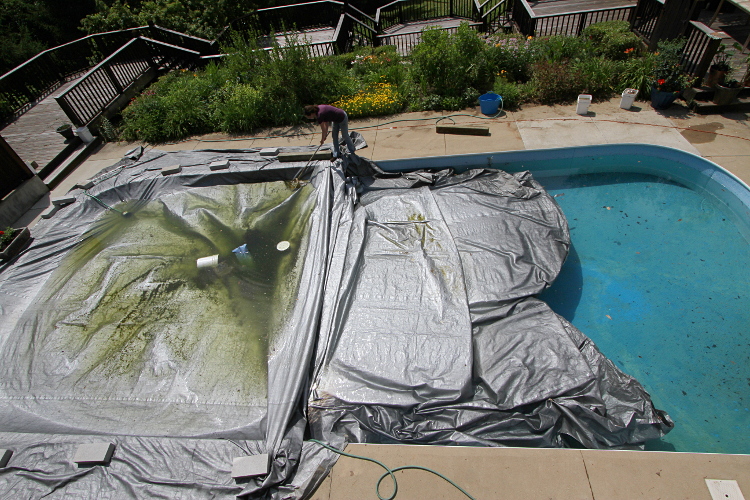
Evicting the amphibians from our pool on June 23, 2013. The Wood Frogs and
American Toads had already transformed. Here, Roxanne is dipnetting the
few remaining tadpoles, which are all Cope's Gray Treefrogs.
They were transferred to other bodies of water.
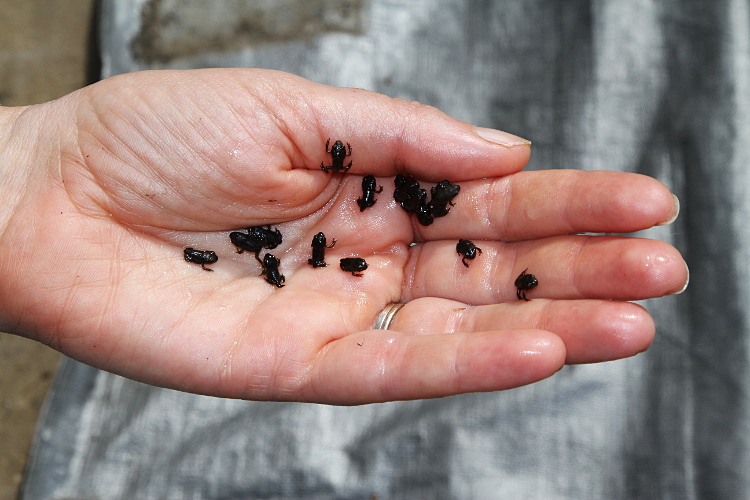
Many American Toadlets (Bufo americanus) were found under and in the
folds of the tarp as we removed it from the pool. Roxanne moved them to
her various gardens.
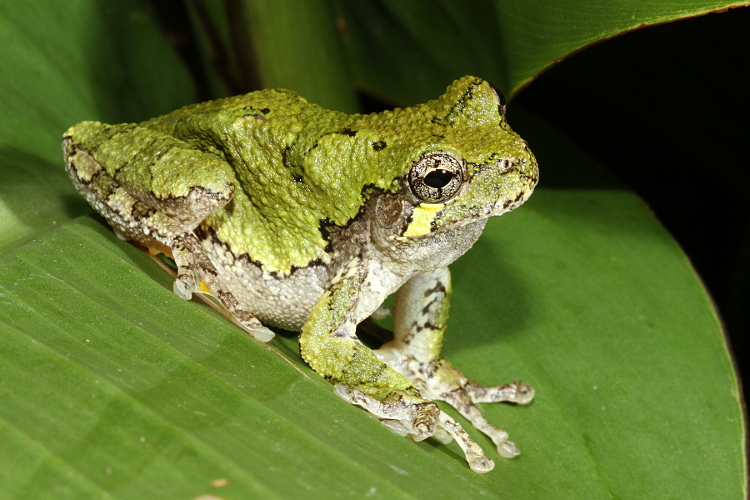
A Gray Treefrog that Roxanne found in our yard on 13 August 2013.
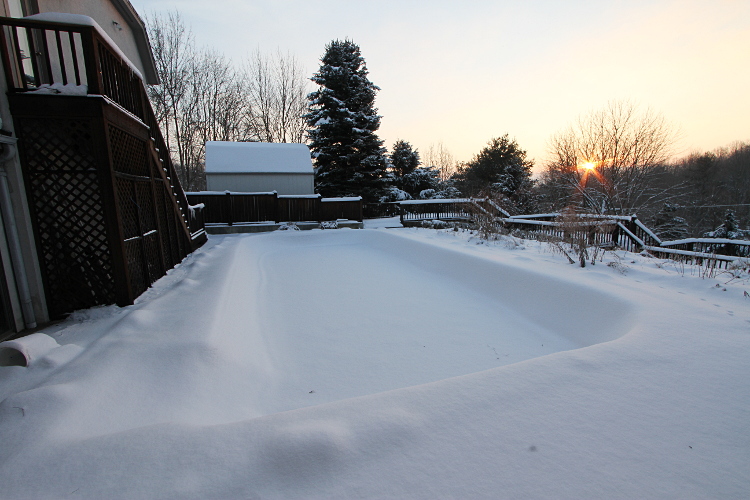
Our pool, early in the morning of 10 February 2014. This winter was a
particularly rough one.
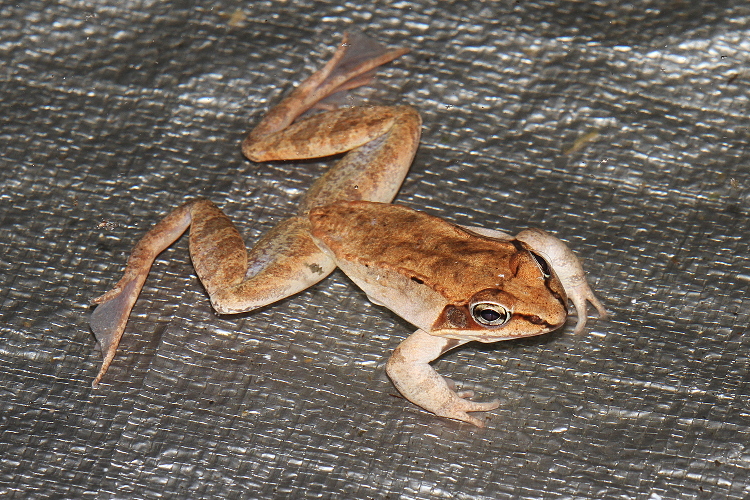
The Wood Frogs (Rana sylvatica) first arrived at our pool on March 10.
Although there were a lot of them (couple dozen?), it seemed that they were
all males. This is a light one.
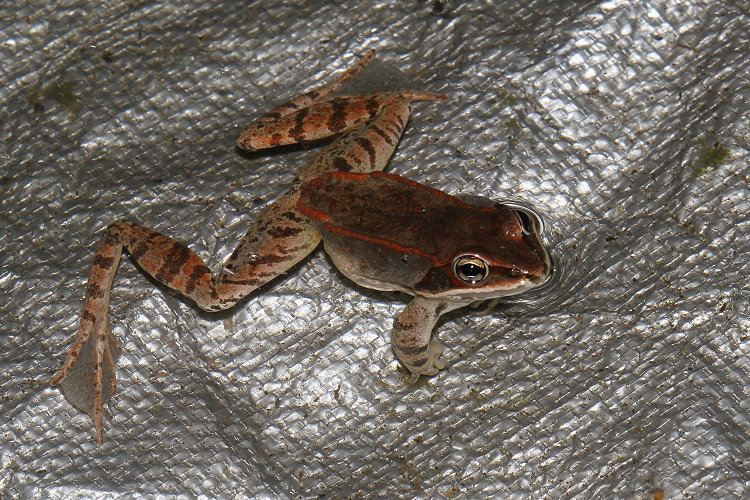
This is a dark one.
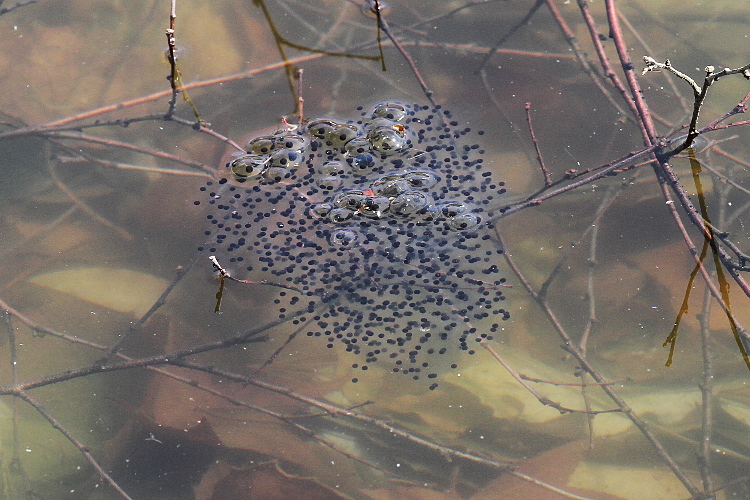
The first Wood Frog eggs were laid in our pool on the night of
21/22 March 2014.
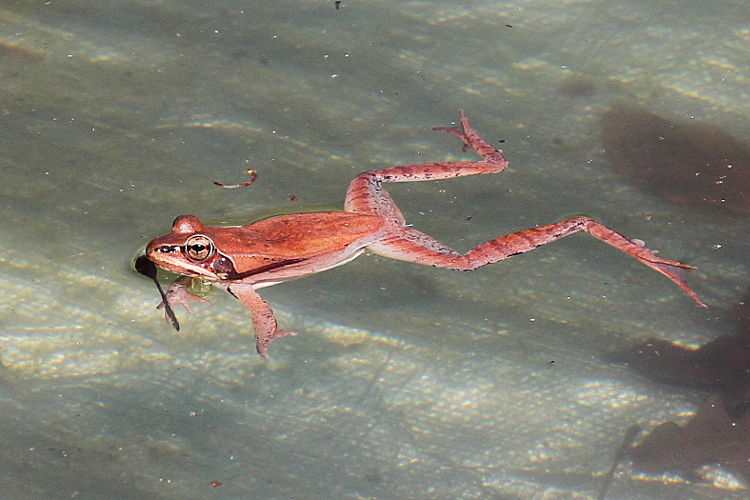
A pink phase Wood Frog in our pool.
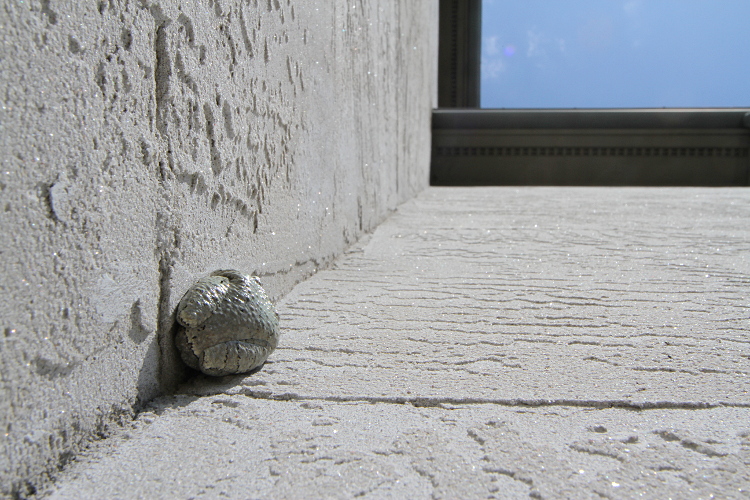
For some reason this Gray Treefrog decided to spend the day on the side
of our house. This is looking straight up at the frog from below.
This was a pretty warm and sunny day and this is the south side
of the house...
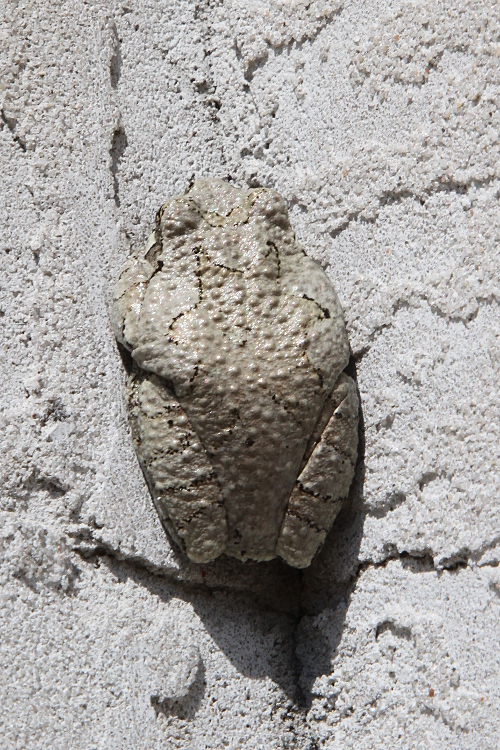
Another look at the Gray Treefrog. Pretty good camouflage, except for
the shadow.
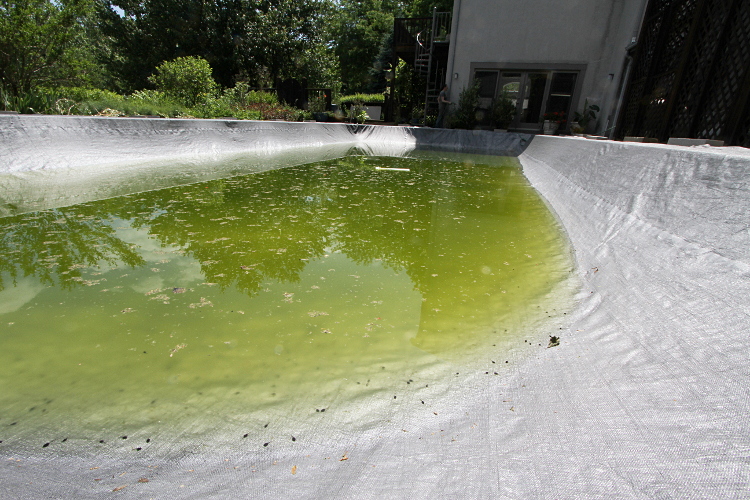
Our pool on 31 May 2014. Waiting for the American Toads
(Bufo americanus) to transform, so the humans can take over.
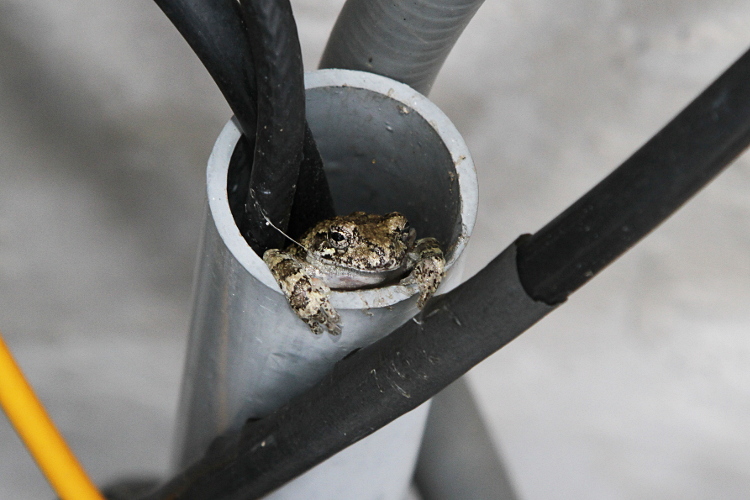
A Cope's Gray Treefrogs (Hyla chrysoscelis), as found guarding our
our connection to the outside world -- cable, TV, and phone.
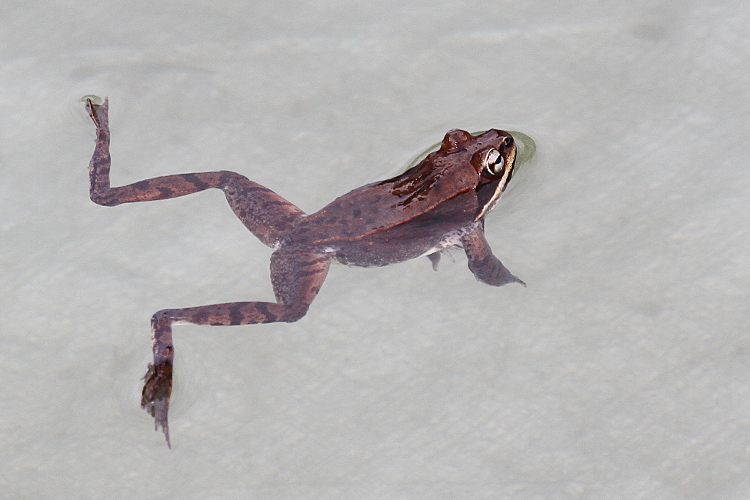
In 2015, the Wood Frogs (Rana sylvatica) first arrived at our pool on
the night of March 13/14. I saw about six in the pool, including this one,
on March 14. They appeared to all be males. The first egg masses appeared
after the following night.
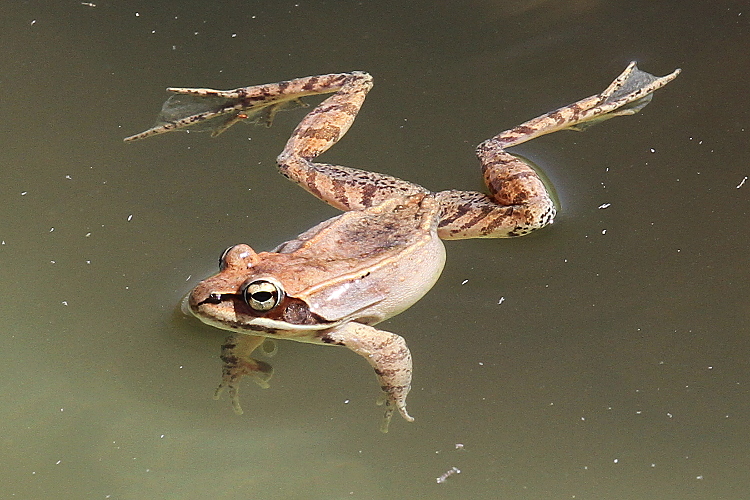
Another Wood Frog, observed on March 15.
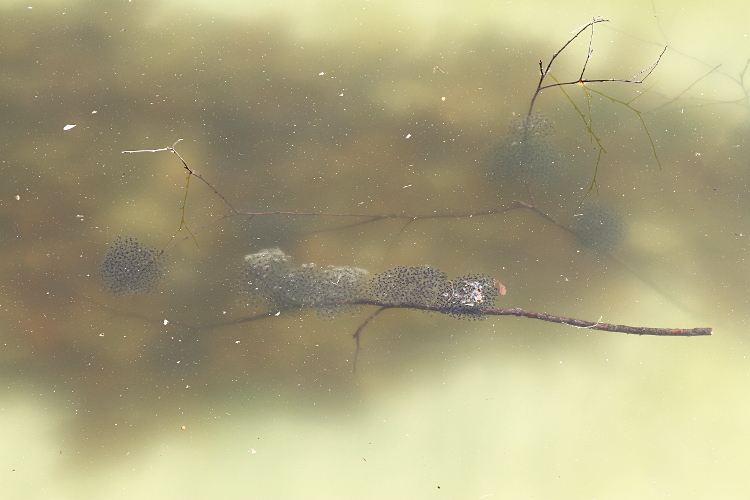
Wood Frog eggs in our pool on 22 March 2015. We put the sticks in there,
because we've noticed that they like to attach their eggs to sticks, but for
whatever reason no sticks were blown into the pool this winter.
On this day I counted at least 12 egg masses.
This is the most I have ever seen in our pool. Note that they did not discover
our pool was useful for breeding purposes until March 2012, so maybe
the increase in numbers is just a matter of them becoming more established
in the area.
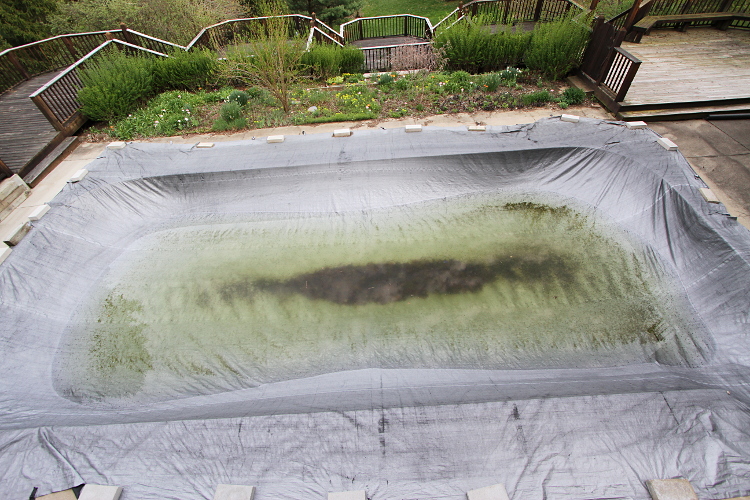
Our pool on 18 April 2015.
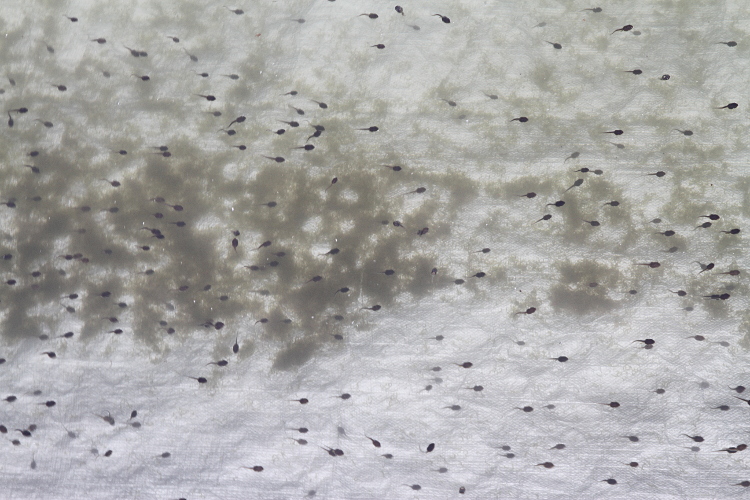
Wood Frog tadpoles (Rana sylvatica) in our pool on 18 April 2015.
There wound up being about 20 Wood Frog egg masses laid in our pool this year.
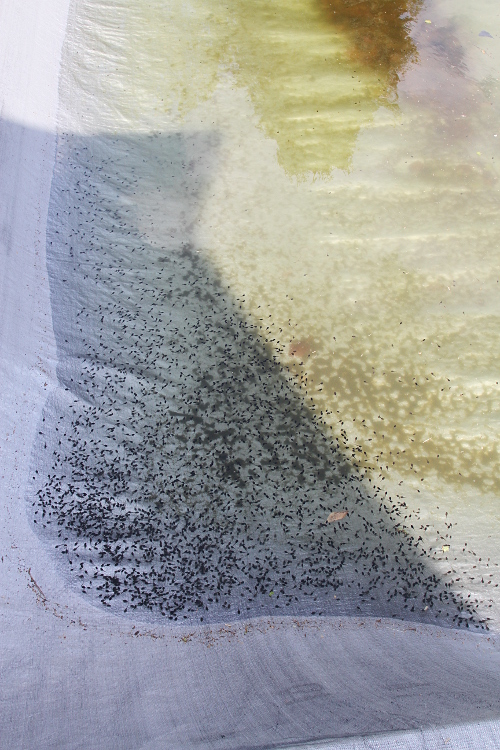
Wood Frog (Rana sylvatica) tadpoles in our pool on May 3. They seem to
avoid the sun in the heat of the day. The detritus that is visible under the
water on the tarp is all tadpole excrement. It seems that this year the
number of tadpoles pushed the carrying capacity of the pool and they were
somewhat short of nutrients. This led to slow growth.
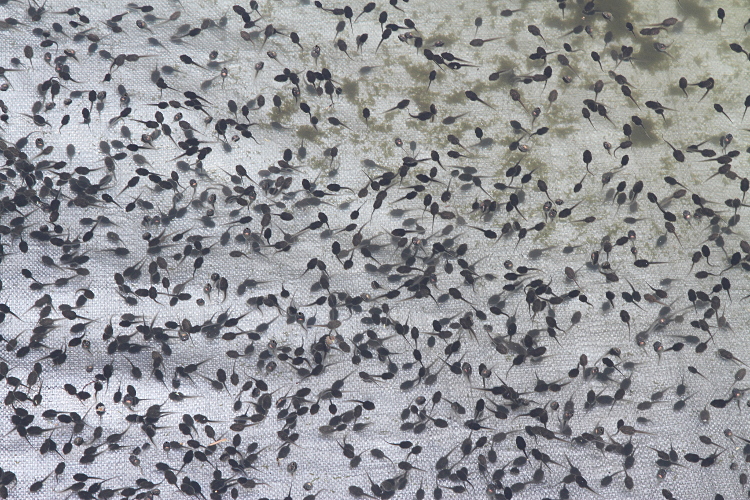
A closer look at the tadpoles.
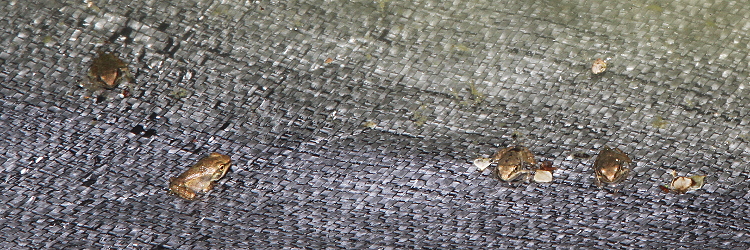
Wood Froglets aka metamorphs (Rana sylvatica) hanging out at the
shoreline on the tarp that covers our pool on August 2.
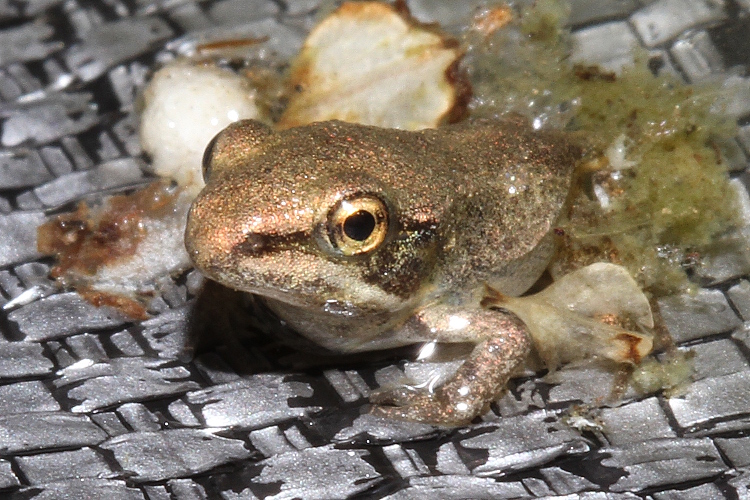
A closer look at one of them.
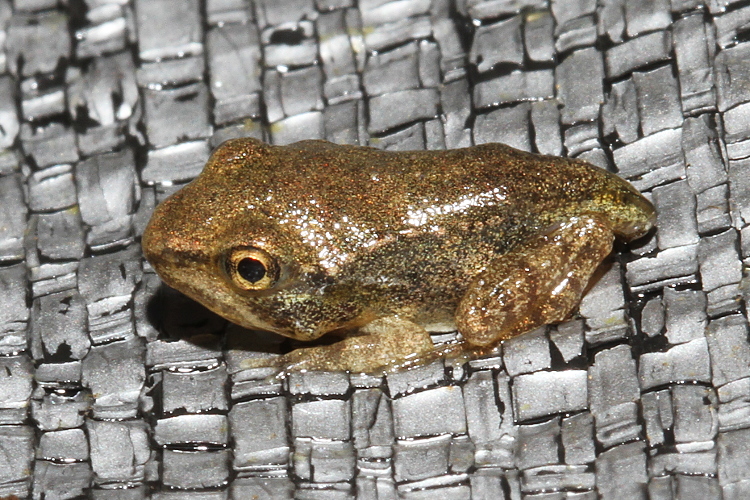
Another Wood Froglet.
There is an interesting story to tell about the frogs and toads and our pool.
Every spring since we moved here, 2002-2014, the American Toads
(Bufo americanus) have bred prolifically in the water that collects in
the tarp that covers our swimming pool during the winter.
We generally leave the tarp in place until most of the
tadpoles have transformed.
Starting in March 2012, we have also had Wood Frogs. In 2012-14, the number
of Wood Frogs breeding was modest, with 4 or 5 egg masses being observed. This
year, however, there were around 20 egg masses. I figure this is because
they are becoming more established in the area and those frogs born in our
''ephemeral pool'' are returning to breed.
This year the Wood Frog activity on our pool started on the night of
March 13/14 and calling continued through April 3.
American Toad calling started April 3 and continued through April 10.
During the day on April 7, I observed several strings of American Toad eggs and
also noticed that the Wood Frog eggs were hatching.
On April 12, I noticed that all of the toad eggs were gone.
By this time there was a very high density of Wood Frog tadpoles.
I was wondering if Wood Frog tadpoles eat toad eggs.
It turns out that they do, and there is a very interesting paper on the
subject: Breeding Habitat Segregation of Wood Frogs and American Toads:
The Role of Interspecific Tadpole Predation and Adult Choice,
James W. Petranka, Mark E. Hopey, Barton T. Jennings, Shannon D. Baird,
and Sarah, J. Boone, Copeia 1994(3), pages 691-697.
Not only do the Wood Frog tadpoles eat American Toad eggs, but if there are
a lot of Wood Frog tadpoles around, the American Toads will not breed there.
Sure enough, no toads were heard calling from our pool after the night of
April 9/10 -- in spite of many nights with ideal conditions where
they could be heard calling in the distance. There was zero successful
American Toad reproduction in our pool this year.
So the Wood Frogs have displaced the American Toads from our pool, which
is pretty remarkable considering how abundant the American Toads have been
in the past. In previous years, the Wood Frog transformed between the
last week in May and the first week in June.
However, this year they did not transform until the first week of August.
Although this summer was cooler than most, I do not believe that is the
reason for the slow transformation. I suspect there were so many tadpoles
that they were limited by food or other resources.
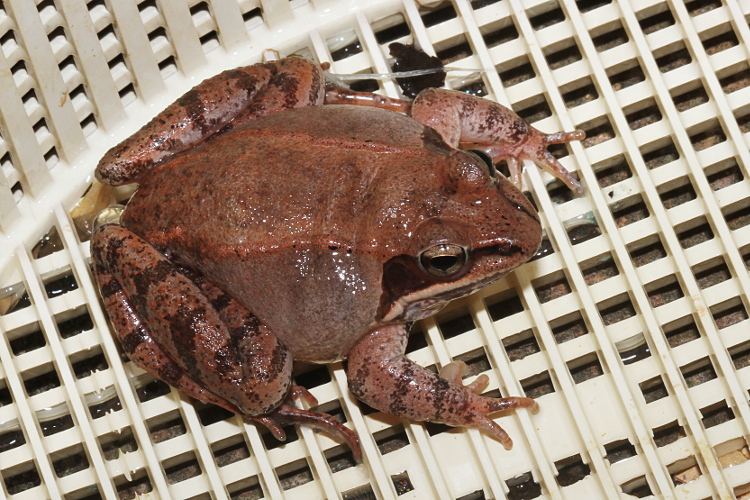
A Wood Frog (Rana sylvatica) found in our pool skimmer on October 20.
A number of them showed up in our pool this fall, which I take as further
evidence that the local population has increased.
In 2016, the Wood Frogs started calling in our pool on the night
of February 20/21.
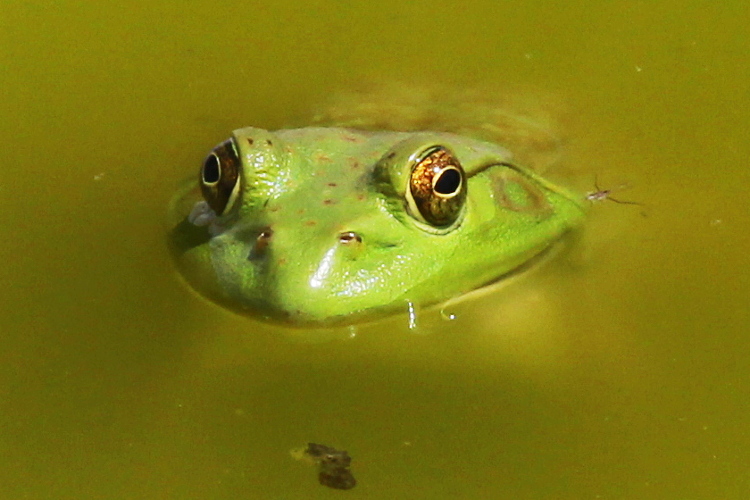
A Bullfrog (Rana catesbeiana) observed in our pool.
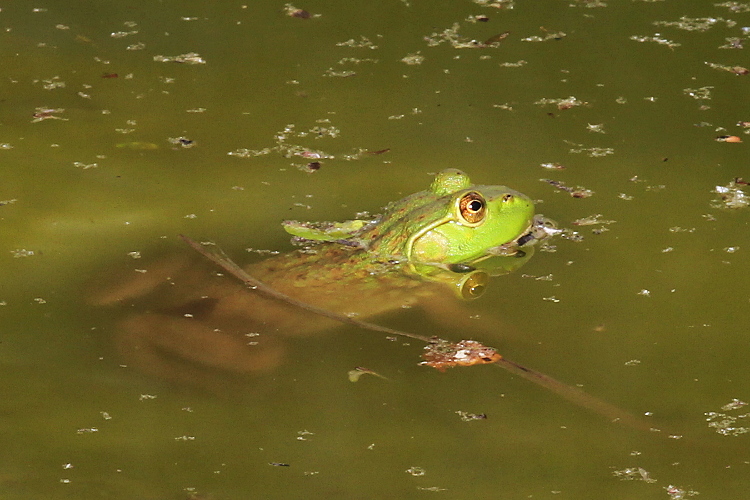
Another Bullfrog in our pool.
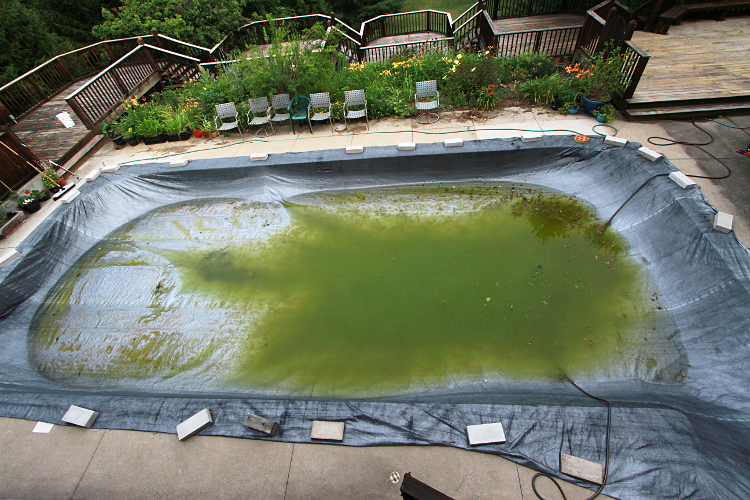
Our pool on June 20.
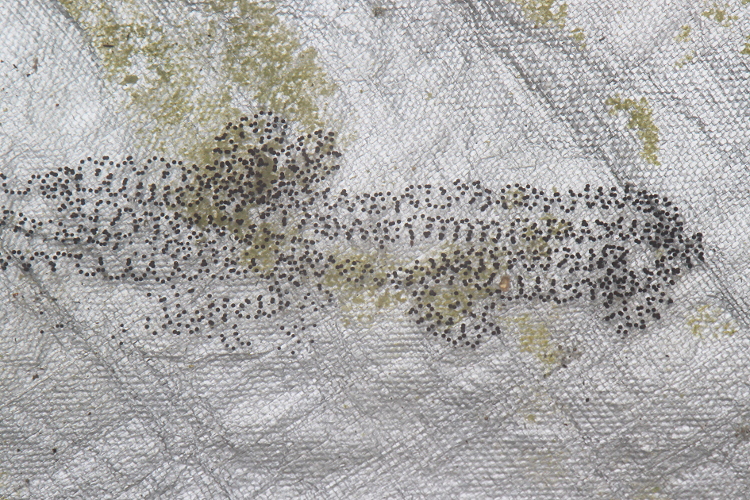
A string of American Toad (Bufo americanus) eggs observed in our pool
on June 28. They had been laid the night before. This is the latest
in the season that I have ever see eggs laid by this species.
I think the delayed breeding may represent an adjustment by the
American toad to avoid predation of the eggs by Wood Frog tadpoles.
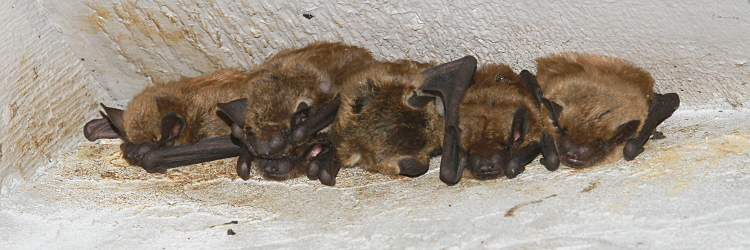
Some bats under the eaves of our house. Roxanne thinks they are cute.
I'm not going to go that far, but they are interesting. They are either
Big Brown or Little Brown Bats.
The bats like to fly around the space over the swimming pool at dusk.
In 2017, the Wood Frogs started calling in our pool on the night of
February 7/8.
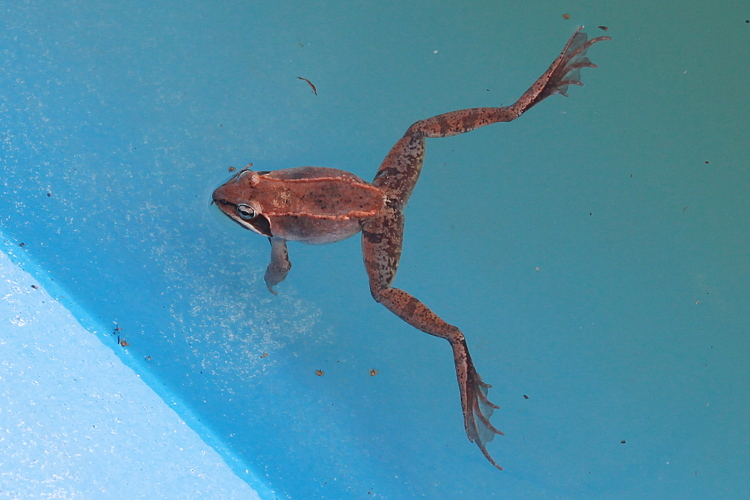
A Wood Frog (Rana sylvatica), hanging out at the pool
on 24 February 2017.
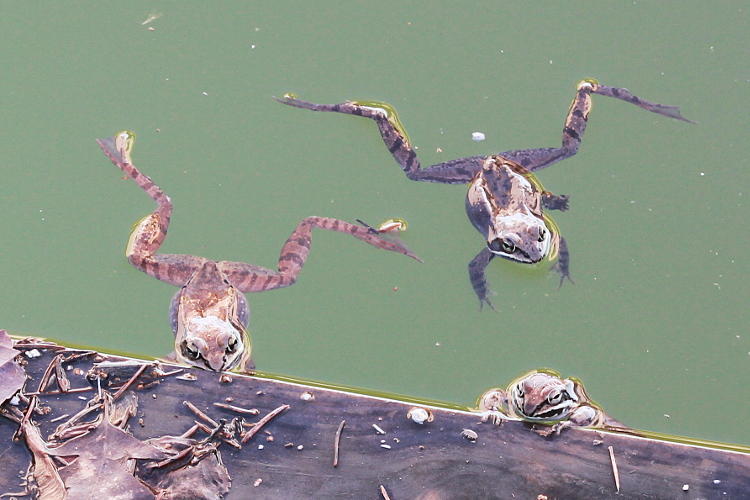
More Wood Frogs, just chillin' (as Bobby Bonilla would say).
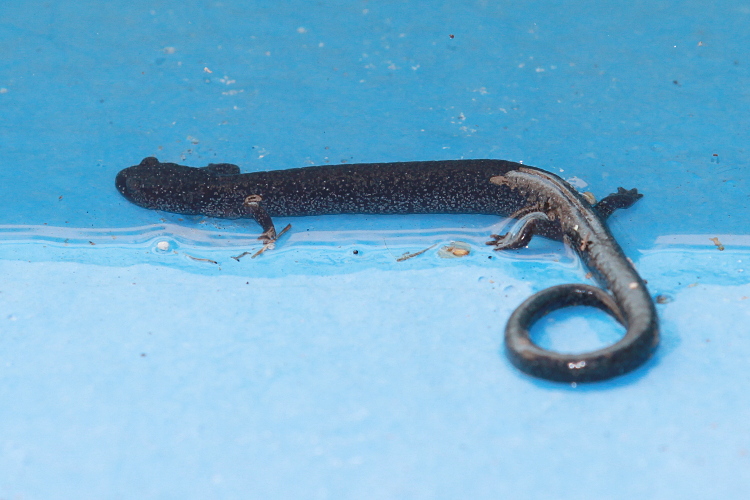
A Ravine Salamander (Plethodon electromorphus), as spotted at the
waterline on February24. I questioned whether or not it could get out on
its own, so I “rescued” it.
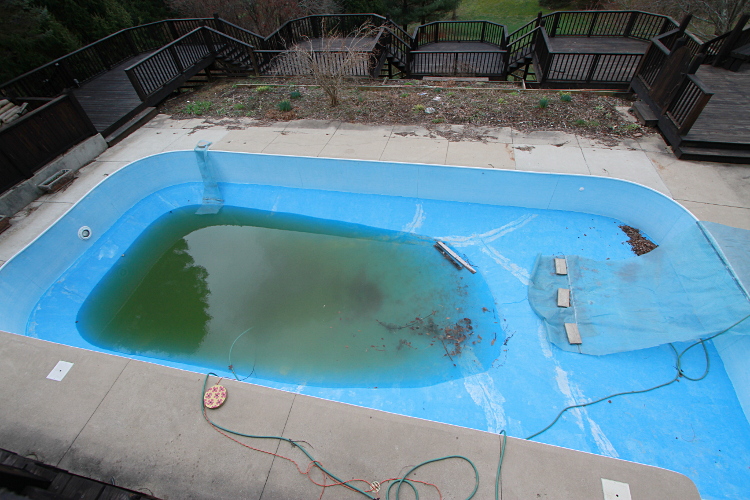
An overview of our pool, on 25 February 2017. For maintenance reasons,
the water level was kept at this level and without a tarp for the winter.
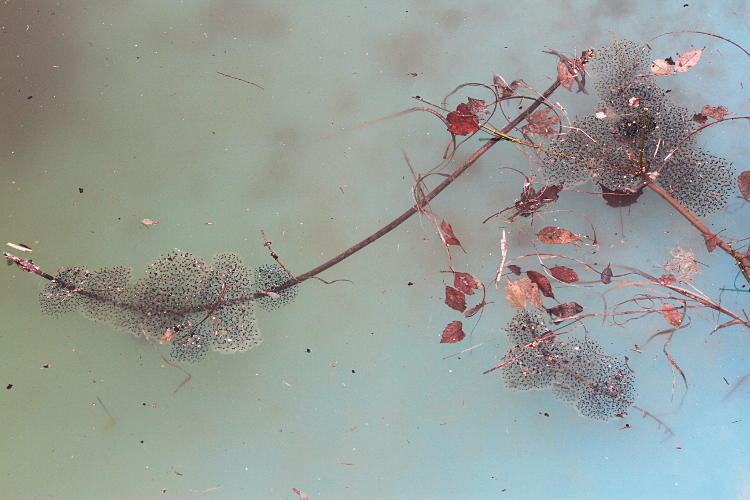
Wood Frog eggs on 25 February. That's gonna be a lot of tadpoles...
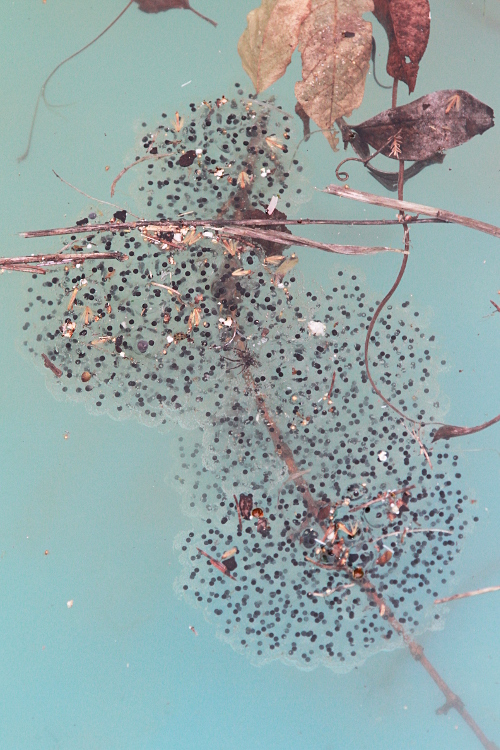
A closer look at some of the Wood Frog eggs. These egg masses were laid
a couple of days before.
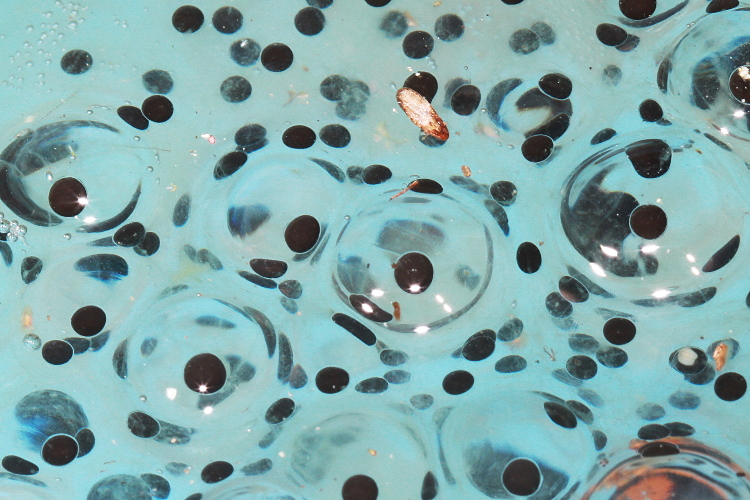
A closer look at some freshly-laid eggs on February 26.
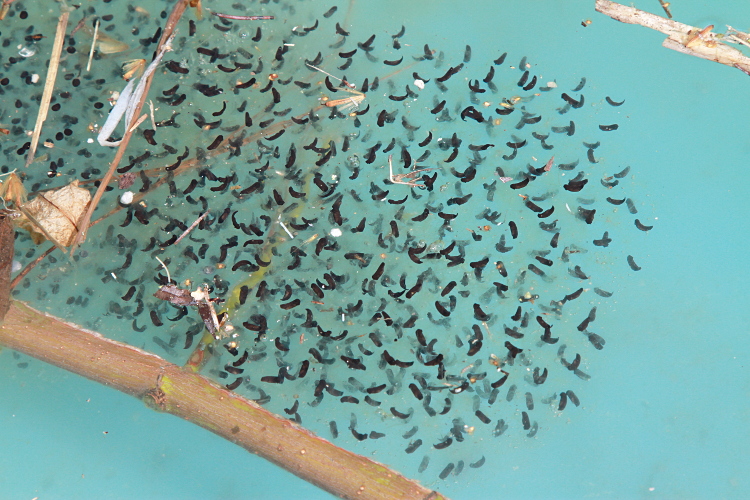
More eggs on February 26. These eggs were laid about two weeks prior and
are nearly ready to hatch.
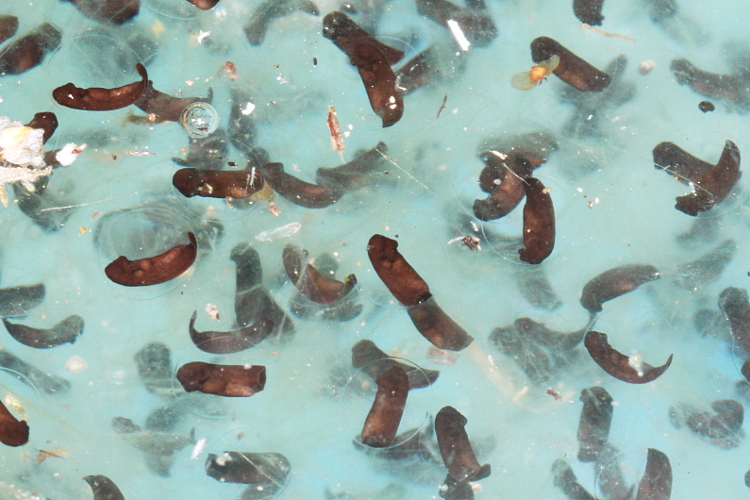
A closer look at the mature eggs.
In 2016 and 2017 we only had one or two toads come to breed in our
pool. By netting their eggs and hatching them separately in a bucket,
I was able to intervene around the predation by Wood Frog tadpole issue.
Then the tadpoles could be added to the pool with the Wood Frog tadpoles
and they seemed to do fine. Then number of toads is still way down and we
now rarely see them in the garden over the course of the summer. They were
once common.
In the summer of 2017 we reached a crossroads with the pool.
Some cracks in the concrete bottom of the pool were in need of repair.
We were also not using the pool very much, since Ryan had moved on.
Considering the costs of the repair, the difficulties in locating a
competent contractor to perform the repair, and the fact that we did
use the pool very much, we decided to remove it.
This was not the least expensive option, but was the best path for us.
The work started in early January, 2018.
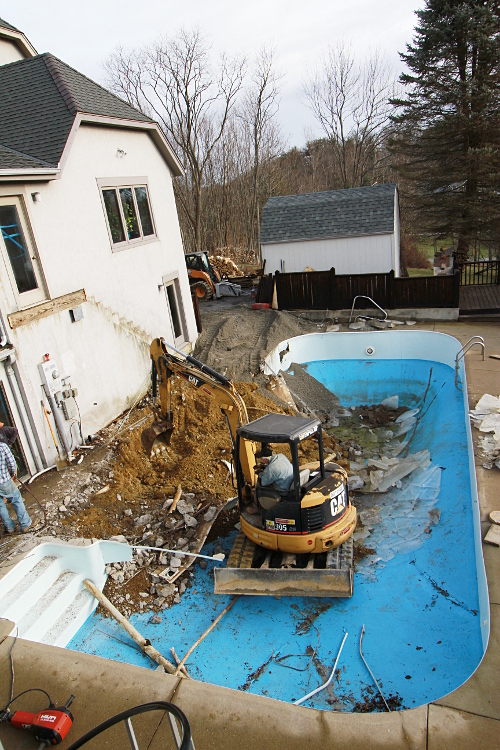
Serious demolition of the pool started on 11 January 2018.
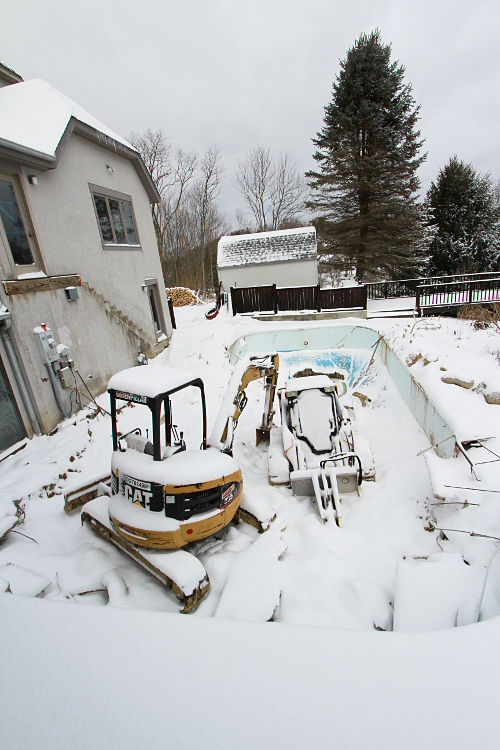
Of course winter weather has a say in things. 13 January 2018.
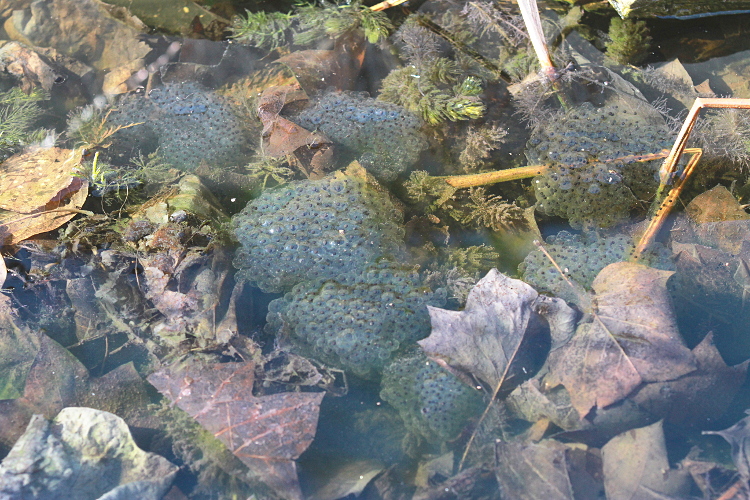
Wood Frog eggs (Rana sylvatica). Fortunately, the Wood Frogs were
able to find a small ornamental pond in our front yard. This photo was
taken on 25 February 2018.
Many of these eggs were transfered to a wading pool, where they succesfully
hatched and metamorphosized.
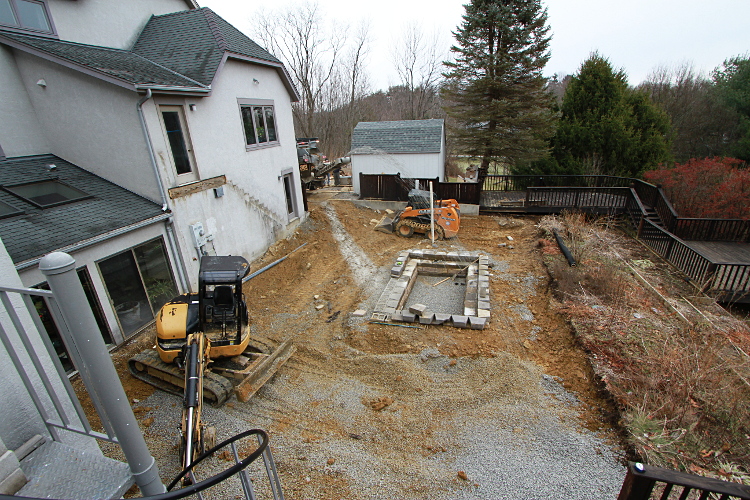
The project is coming along. You can see we are putting in
an ornamental pond. 29 January 2018.
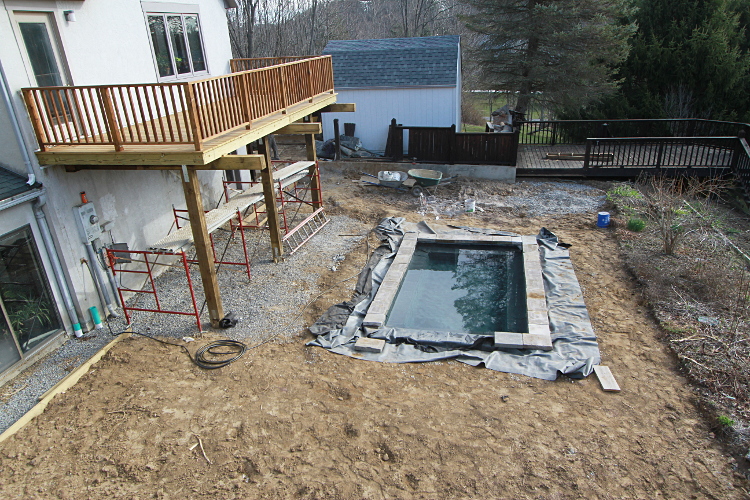
19 March 2018.
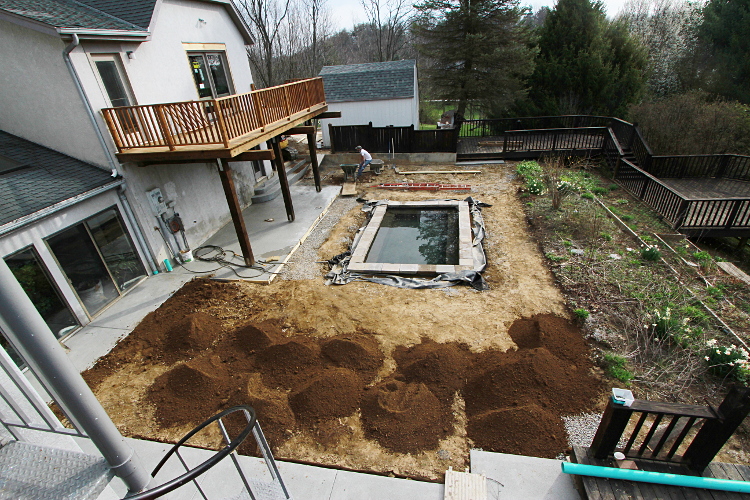
13 April 2018.
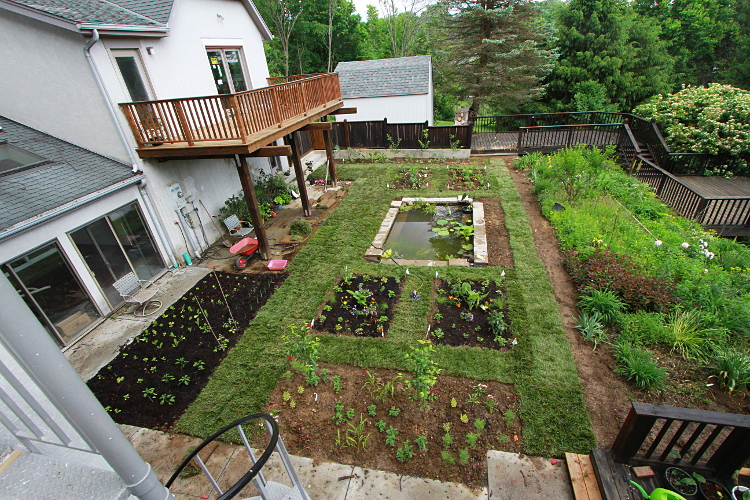
We just finished lay the sod. Pretty much done. 26 May 2018.
So ends the chapter on our old pool. The Green and Bull Frogs moved into
the new pool immediately. It wil be interesting to see what else
happens.





















































































